The Argo Parahyangan is a series of daily intercity train services running between Jakarta’s Gambir station and Bandung, Indonesia’s 3rd largest city. The route runs for 166 kilometres, and is scheduled to complete the journey in 2 hours and 45 minutes.
I took a day trip to Bandung to try out the new Jakarta-Bandung High Speed Rail (also named WHOOSH), which brought me from Jakarta to Bandung in a total of 50 minutes, albeit with a transfer at Padalarang to a feeder service for the final leg to Bandung. Having had a taste of the high speed future, it only made sense that my return trip to Jakarta would be on the legacy Argo Parahyangan service running westwards to Jakarta directly from Bandung station.
Who runs the trains: Mainline trains in Indonesia are operated by PT KAI, short for Persoeran Terbatas Kereta Api Indonesia (translates as Indonesian Railways Ltd). Much of the country’s railway network is located on the island of Java, the economic and political centre of Indonesia.
Buying my tickets
I was greatly helped by The Man in Seat 61’s guide to buying Indonesian train tickets, and I do recommend his website as an excellent resource for worldwide rail travel.
There are a few ways to buy tickets for trains in Indonesia, and the most straightforward option for foreign tourists is via Tiket.com. This is a major third-party booking website in Indonesia, selling flight tickets, hotels, travel packages, tickets for attractions, all in addition to PT KAI rail tickets. The main advantage to using Tiket.com for PT KAI tickets is that they accept foreign credit cards, but it does require you to sign up for an account. Your booking confirmation and ticket (and the ticket reference number) will then be emailed to you and can also be accessed on their app.
I opted for the 4:10 pm departure from Bandung in Executive Class , which cost me Rp 200,000 and service & booking fees of Rp 15,500, bringing the total cost of my one-way ticket to Rp 215,500.00 (approx. USD 13.87, MYR 64.45, EUR 12.65, GBP 10.88). I was also able to make a seat selection free of charge when buying my ticket, and there was no need to worry about seat directions as all seats are rotated to face the direction of travel.
Tiket.com’s user interface is quite straightforward, but it does have a quirk where it lists tickets for the same train timings at progressively increasing prices. This is apparently a very basic form of dynamic pricing, where the cheaper tickets will be snapped up first, with the increasingly more expensive tickets remaining available for selection.
Note: The option to buy train tickets will only appear if the display currency is set to Indonesian Rupiah, and all PT KAI tickets are quoted in Indonesian Rupiah.
There are other ways of buying PT KAI tickets, such as buying directly from PT KAI’s website, buying from PT KAI ticket counters, and buying from Indomaret convenience stores. The catch with these methods are that PT KAI’s website doesn’t accept foreign credit cards, and buying from PT KAI’s ticket counters and Indomaret convenience stores leaves you open to a surge in travel demand at the last minute. If you’re visiting from abroad, just buy your tickets through Tiket.com.
Is this my ticket?
No matter who you buy your tickets from, remember that you cannot board a PT KAI intercity train with only your ticket. PT KAI requires passengers to check-in at the train station to receive an orange-bordered printed boarding pass. Simply walk up to a check in kiosk or a customer service counter with your ticket reference number and ID (i.e your Passport) ready, and enter your ticket reference number. You will then receive your printed boarding pass, which allows you to clear the ticket barriers and actually board the train.
Departure from Bandung station
I arrived at Bandung station (Stasiun Bandung) via Grab just over an hour before my train’s departure time and just in time for the afternoon rain shower. Bandung station is split into both north and south sections. Local trains are handled by the southern entrance, while the northern entrance serves long distance intercity trains. Be sure to tell your driver exactly which entrance you need: “Pintu Utara” for the northern entrance, or “Pintu Selatan” for the southern entrance.
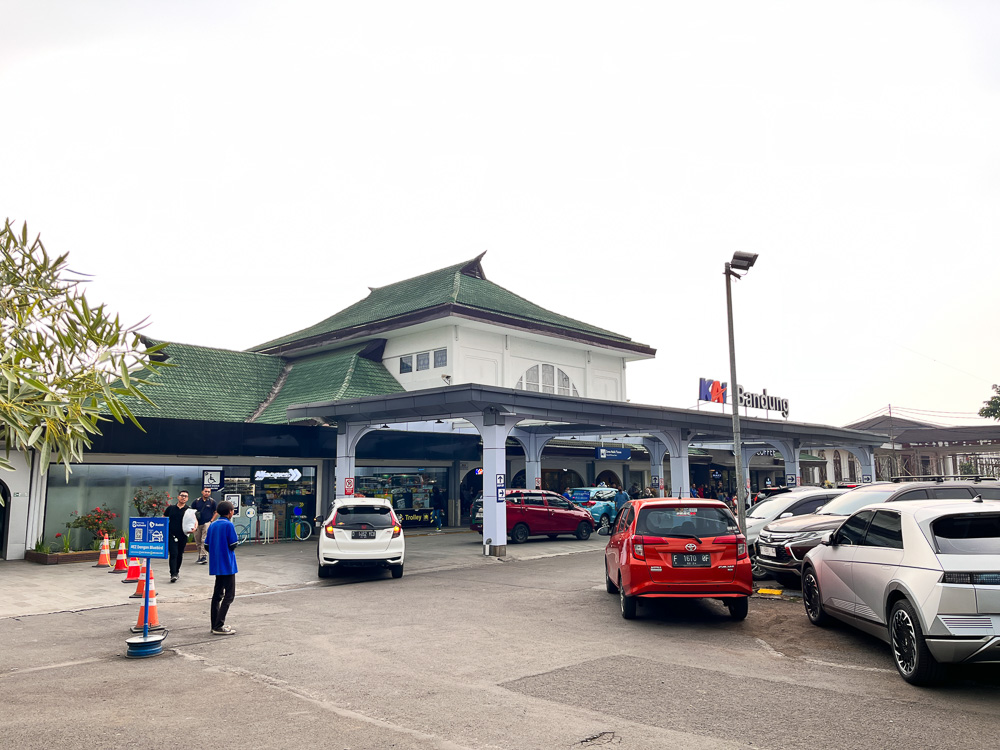
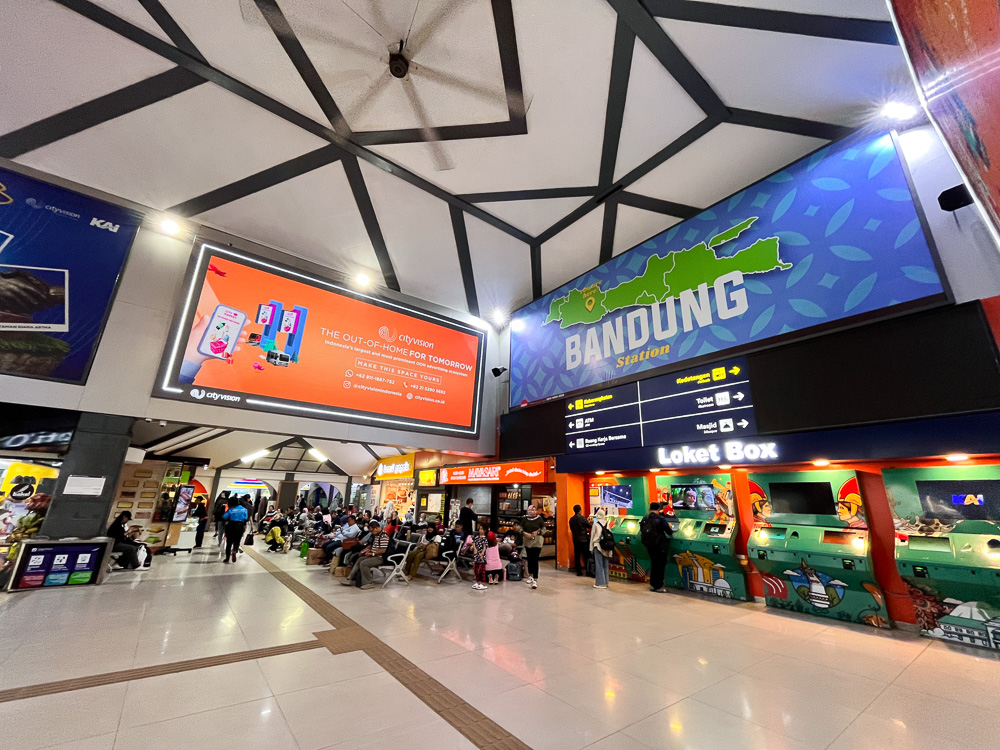
I initially tried and failed to locate the check in kiosks to print my boarding pass, so I headed off to the small but comfortable ticketing office to the left of the station hall. The PT KAI staff on duty were friendly and helpful, and I got my boarding pass printed in no time after my booking was checked against my passport. If you’re concerned about a language barrier there is nothing to worry about, as the PT KAI staff spoke English.
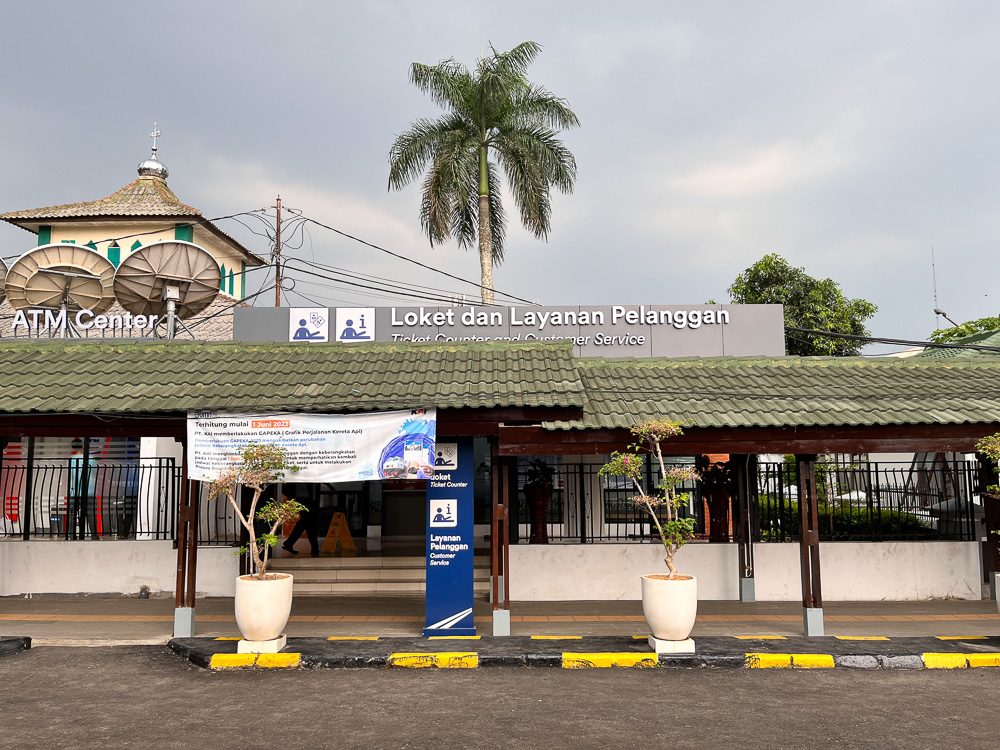
I would later successfully locate the elusive check in kiosks, which were placed in a spot just before the ticket barriers. Unfortunately it sort of just blended in with the crowd. I expected PT KAI to have placed it in the central hall in a more visible location, but that wasn’t the case.
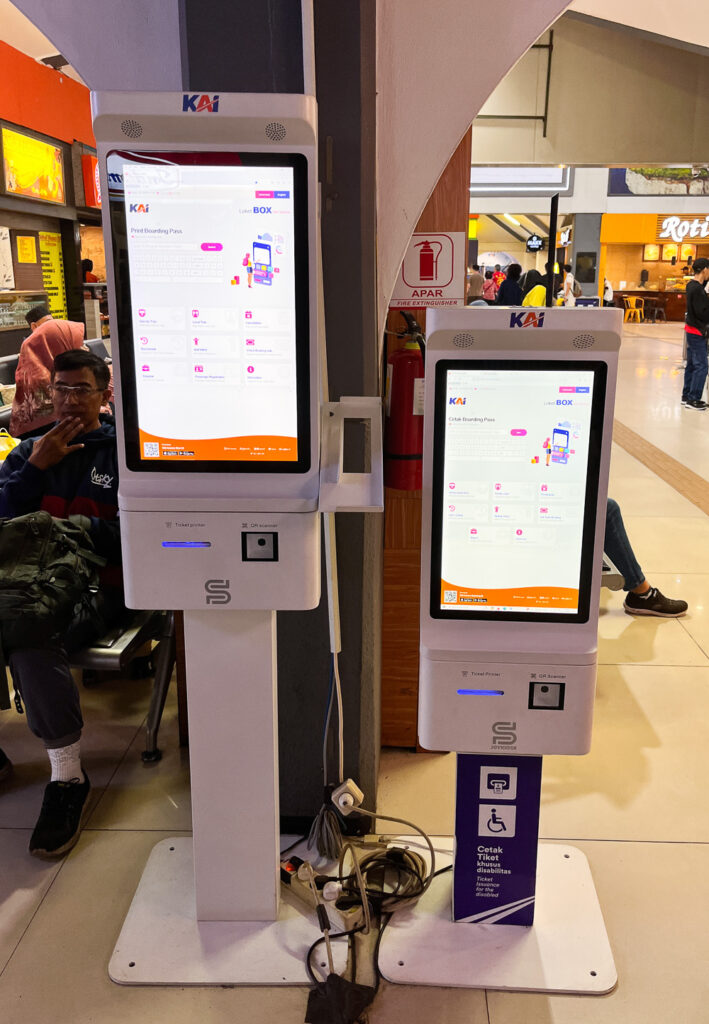
PT KAI recently introduced face-recognition ticket gates at key stations like Jakarta Gambir and Bandung. You need to sign up on PT KAI’s app to use these gates and the process requires an Indonesian National ID number (Nombor Induk Kependudukan). Now I’m not an Indonesian citizen, so I was somewhat apprehensive to see how PT KAI would handle passengers not registered for the new gates. As it turns out, PT KAI still maintains a single counter at Bandung station’s ticket gates dedicated to processing passengers like me. I’m not exactly sure how long this arrangement will last, so I’d recommend coming early to allow for any possibilities.
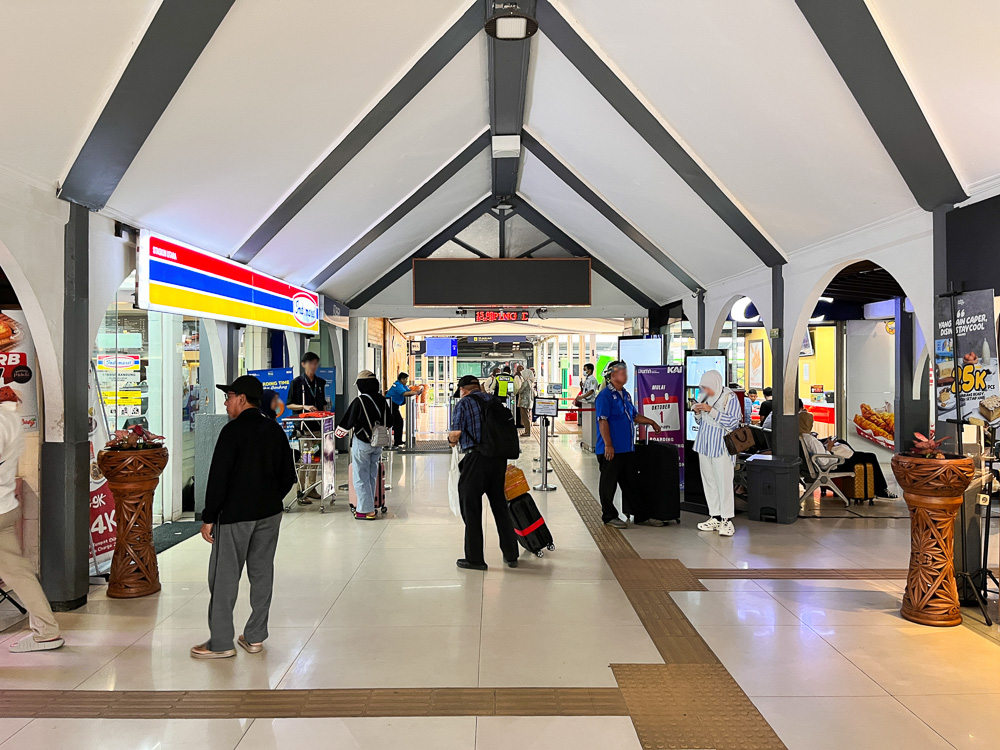
With the hectic part of the journey sorted, I settled down in the paid area for some much needed rest. This section sits parallel to the tracks and features a nice small garden with a koi pond, shops selling food and drinks, some chairs, and a busker. Yes, you read that right, the station hosts a busker in the paid area. This adds to the atmosphere, and is a very nice area to unwind before the train ride.

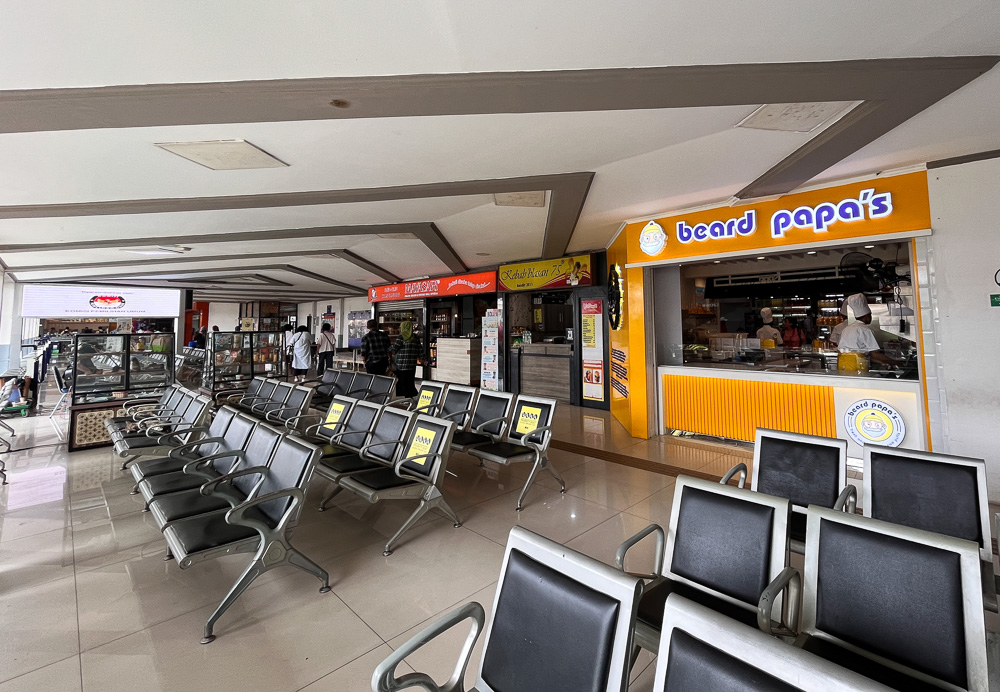
Boarding the Argo Parahyangan
I didn’t have a long wait before station staff announced that my train was open for boarding at Platform 6 a full hour before the scheduled departure time. PT KAI staff came over to the waiting area and started directing passengers up the station’s newly built elevated “skybridge” to the platform.
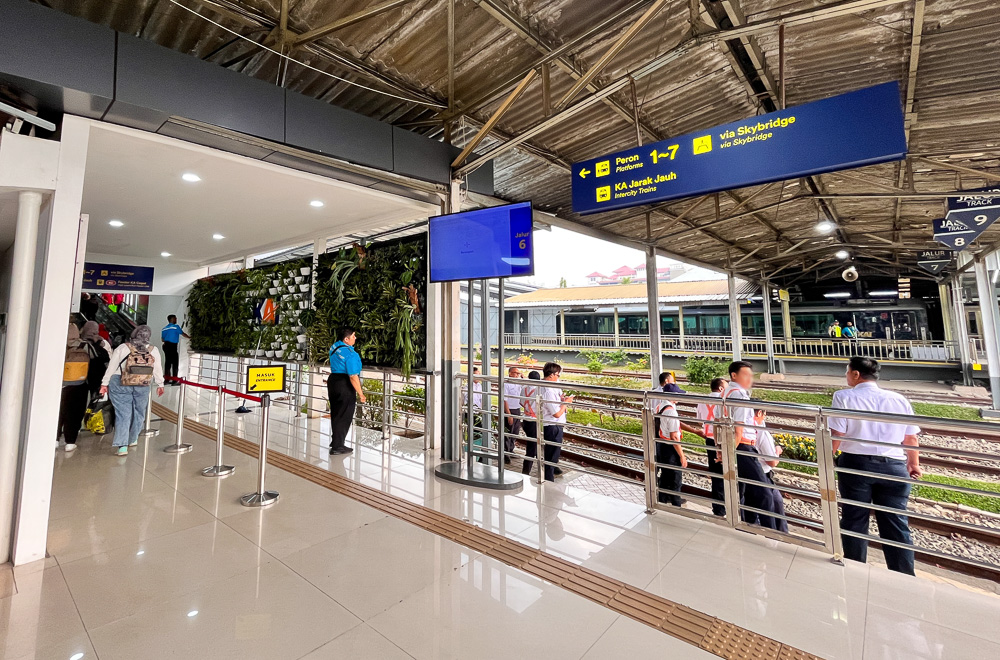
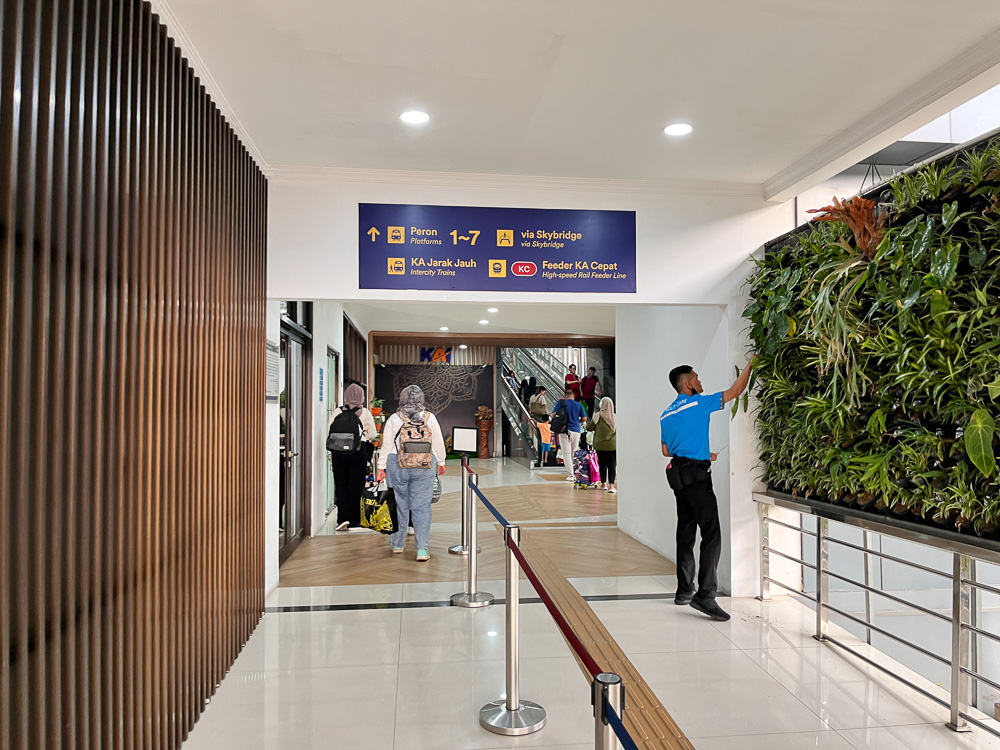
The new skybridge is essentially a completely enclosed bridge connecting the station’s various platforms. The structure is air conditioned and much safer than the old walkway that used to lead across the tracks. The only problem is that access to the bridge is via slow inclined travellators, which isn’t great if multiple trains were departing simultaneously and you were running late.
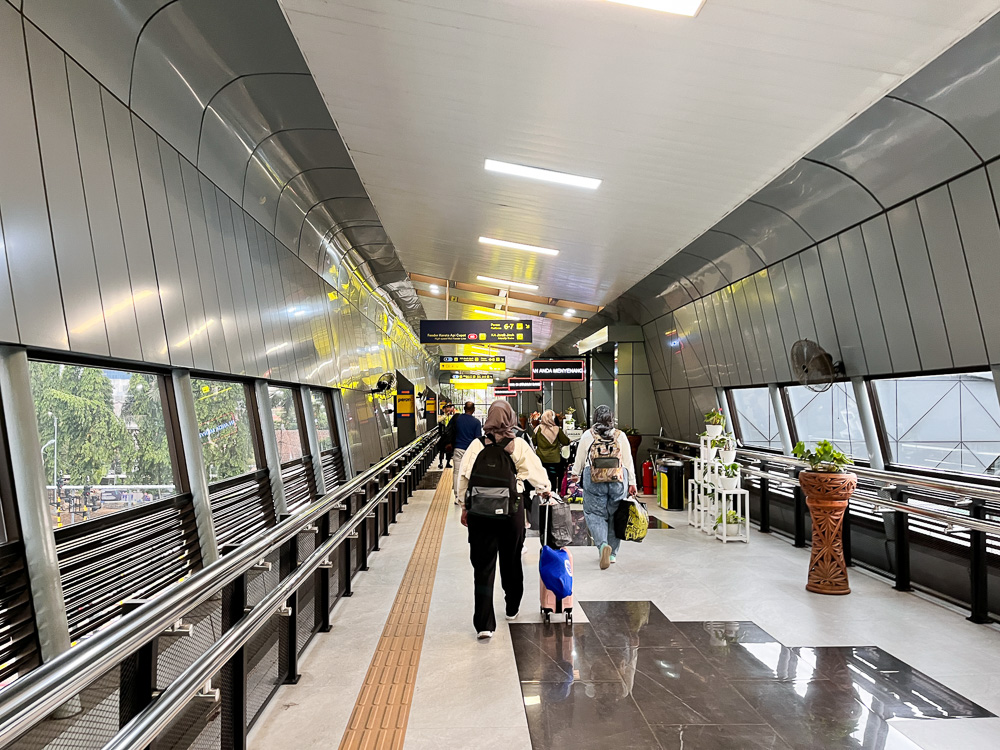
I also appreciated that PT KAI made things easier for passengers with a large sign denoting the correct platform in use. If that wasn’t user friendly enough, look for the destination plates on the coaches.
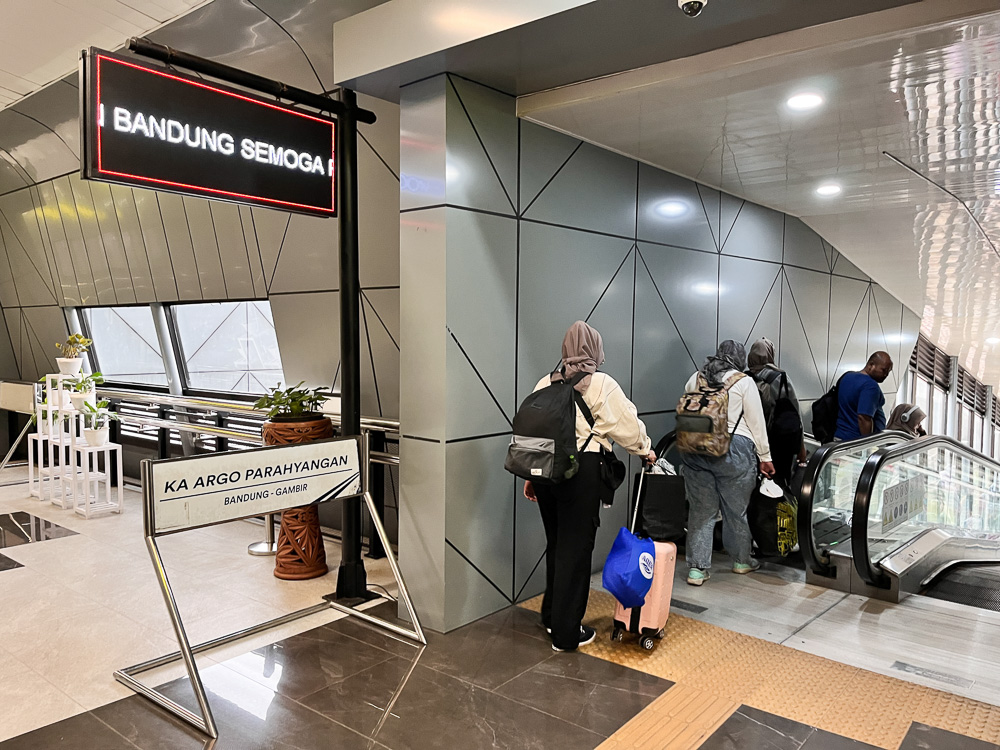
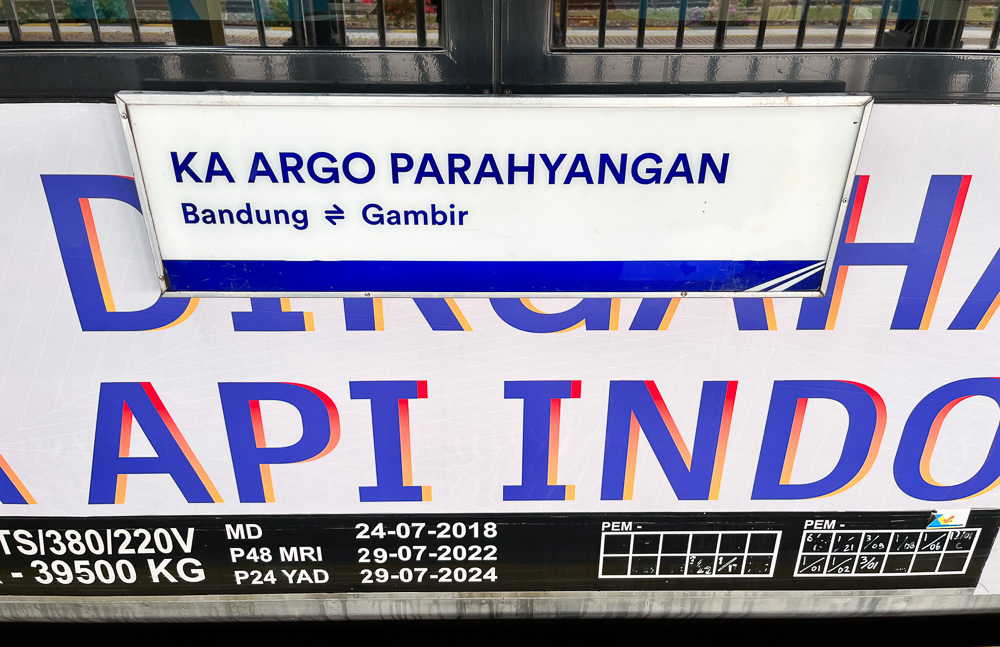
Our train today was formed of 9 coaches with one generator car. The whole consist was pulled by a CC 206 (GE CM20EMP) diesel-electric locomotive, and the consist was so long that one half of the last coach, the generator car and the locomotive extended further beyond the end of the platform. All of the passenger coaches were of the newer stainless steel bodied type.

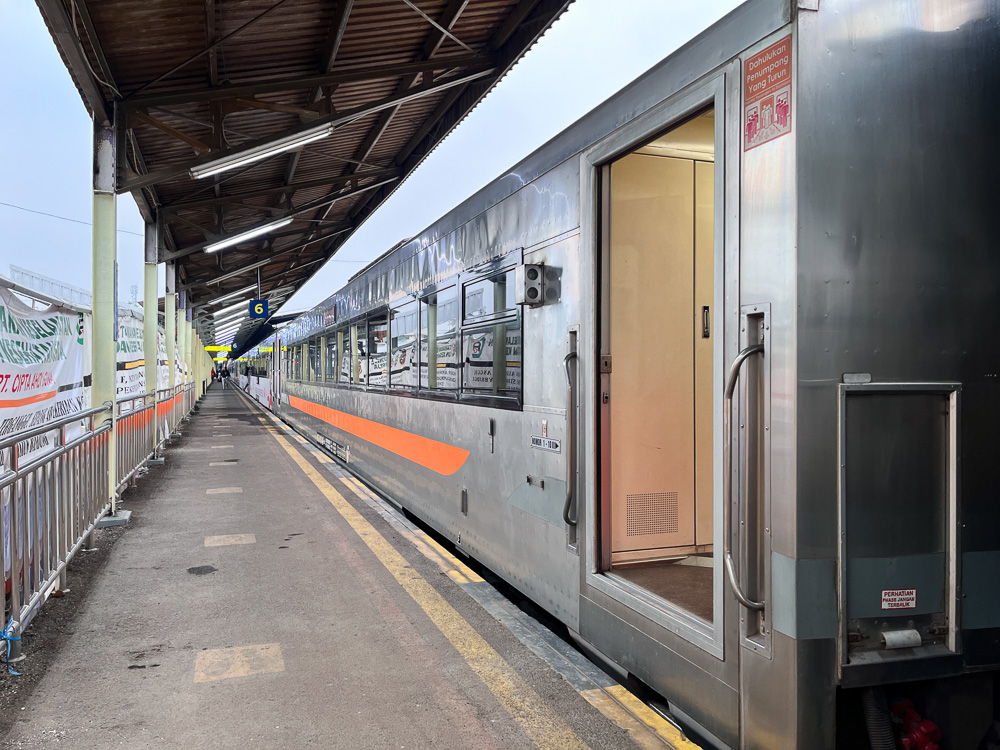
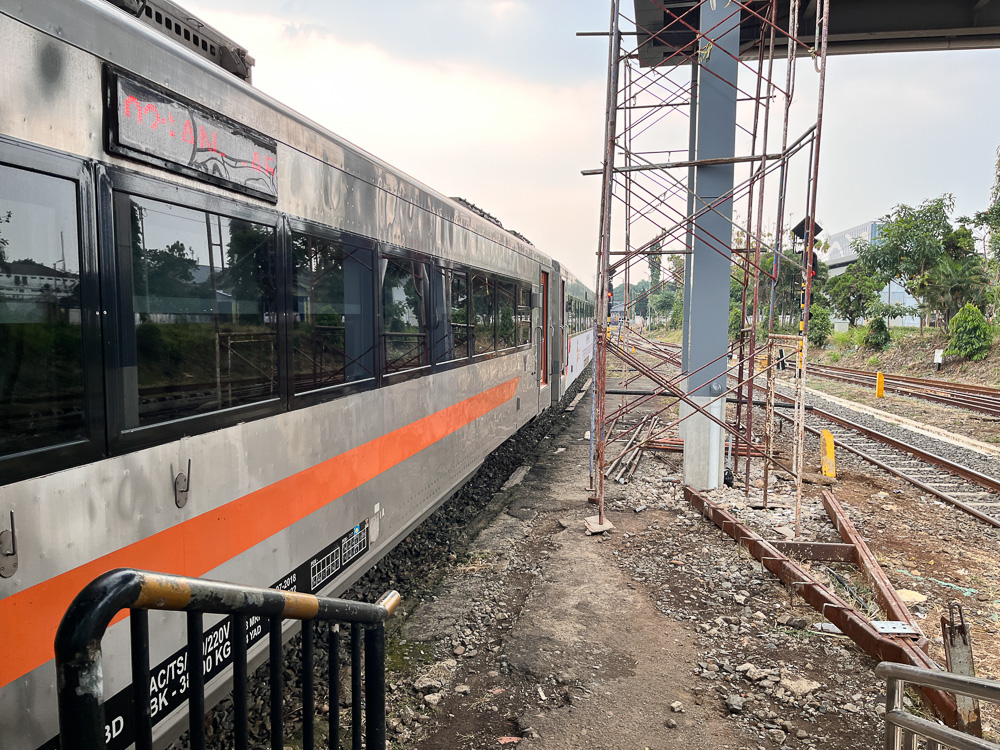
I later took a walk down the platform after arrival at Gambir, and discovered that the generator car also contained the designated space for bicycles. Interesting.

The platforms at Bandung station are not level with the train carriage doors and unfortunately do not appear to be disabled friendly. You need to step up in order to enter the train carriage and step down to get off.
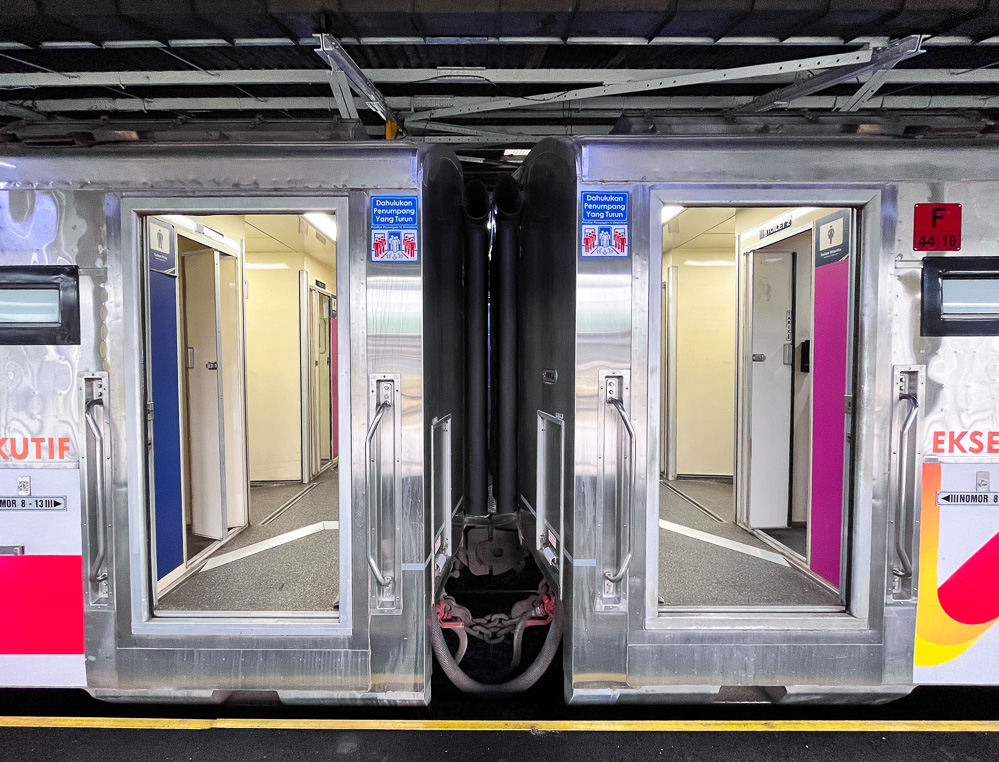
The one hour of boarding time ensured that nobody had to rush to make the train. With boarding completed, the doors were shut and our train rumbled off for an on time departure.
Cabin & Onboard Amenities
Three levels of seating are available on the Argo Parahyangan: The base tier Economy Class, the mid-tier Executive Class, and the top tier Panoramic Coach.
PT KAI Executive Class seats
The Executive Class is the mid-tier product offering on the Argo Parahyangan. The seats have recently been refurbished by PT KAI, and are decked out in a blue-grey colour scheme that is quite pleasing to the eyes.
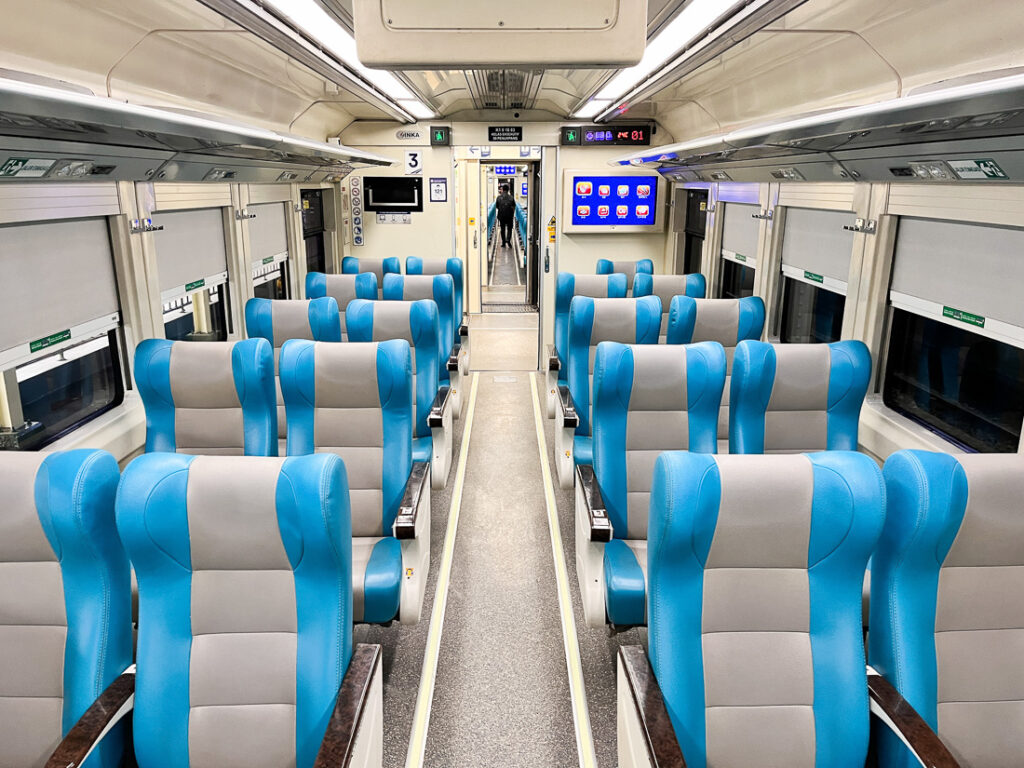
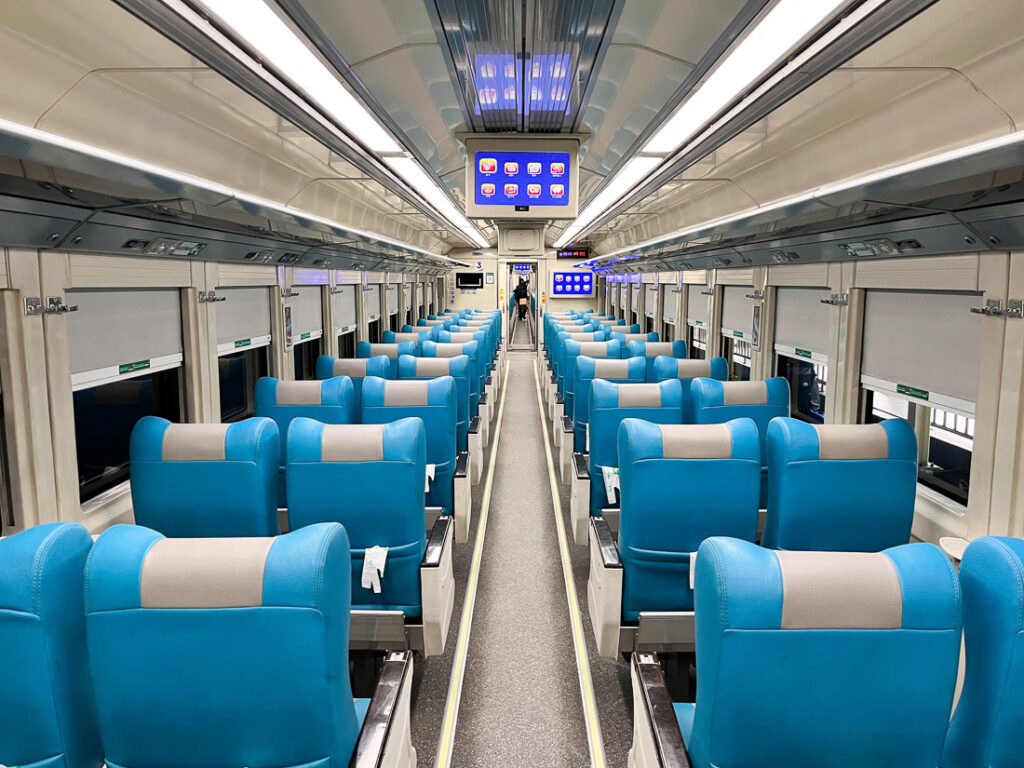
Executive Class seats are laid out in a 2-2 airline style configuration, with the exception of the end of the coach where it changes to a 2-1 configuration just for a single row. All seats can be rotated to face the direction of travel, and in fact you can watch the train attendants do this just before arriving at the final stop – this helps them save time and get the cabin prepped for the next run ahead of time.
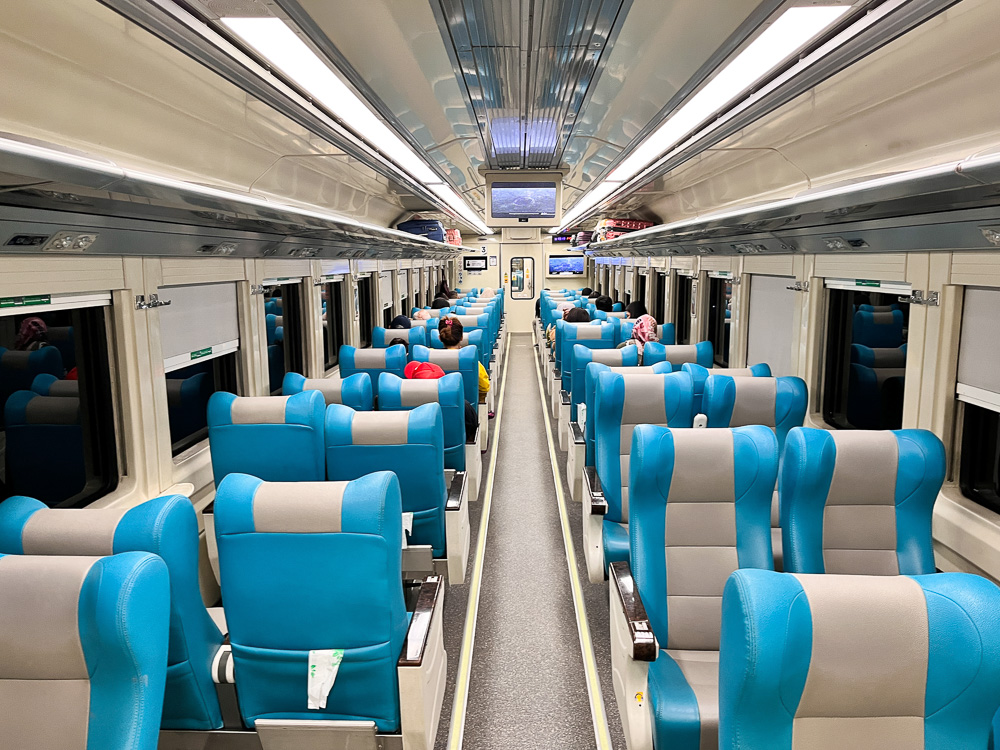
Each bay of seats on each side of the aisle are equipped with two Type F power plugs, which are topped by a small protruding ledge for coffee cups. There are also tray tables in the arm rest, but the surface of these are quite small and not entirely flat. It most definitely doesn’t fit a laptop, but as the ride isn’t very smooth I wouldn’t recommend using your expensive devices onboard anyway.
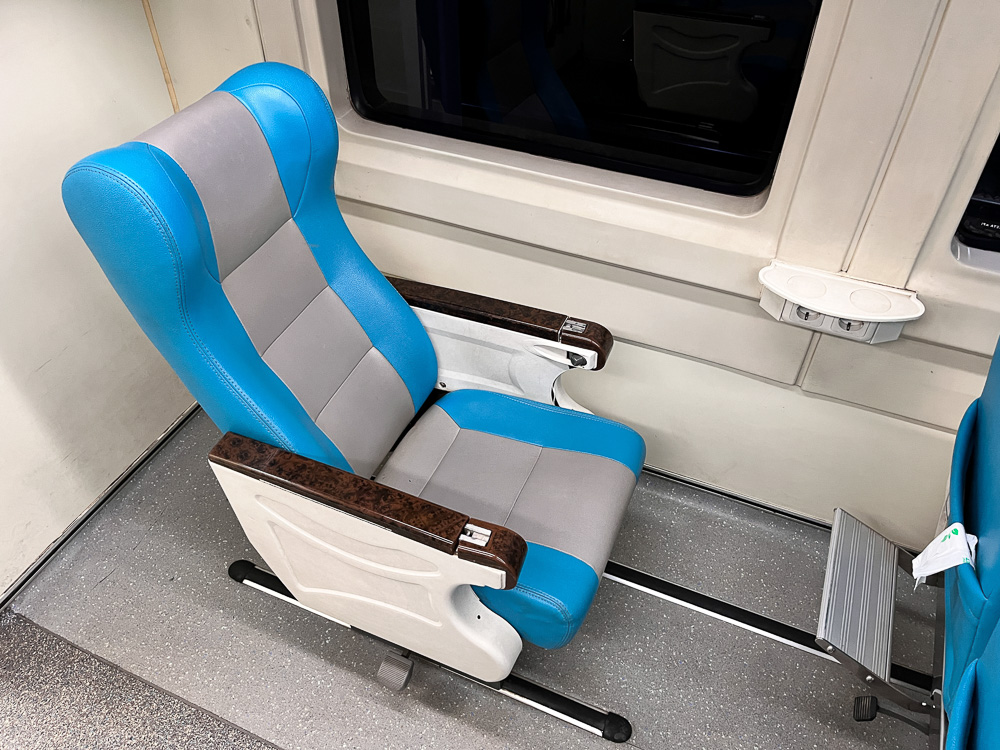
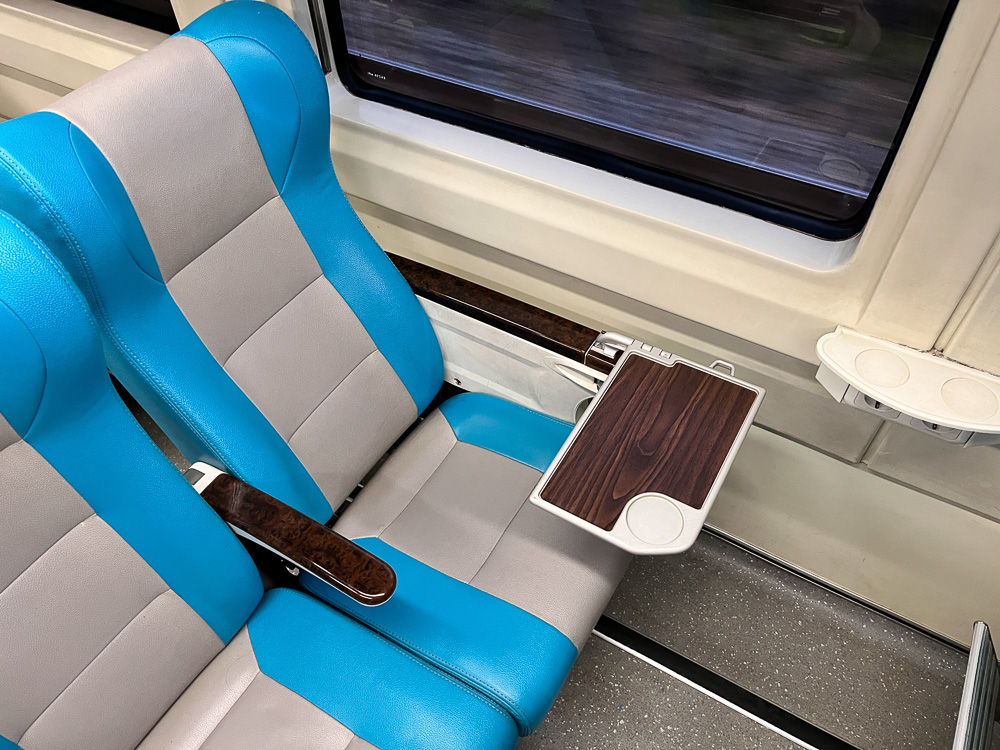
Leg room is very generous with some 50cm of space for your legs, not to mention that each seat also has a foot rest. If you’re tired after walking around Bandung, this is definitely a very comfortable way to get back to Jakarta.
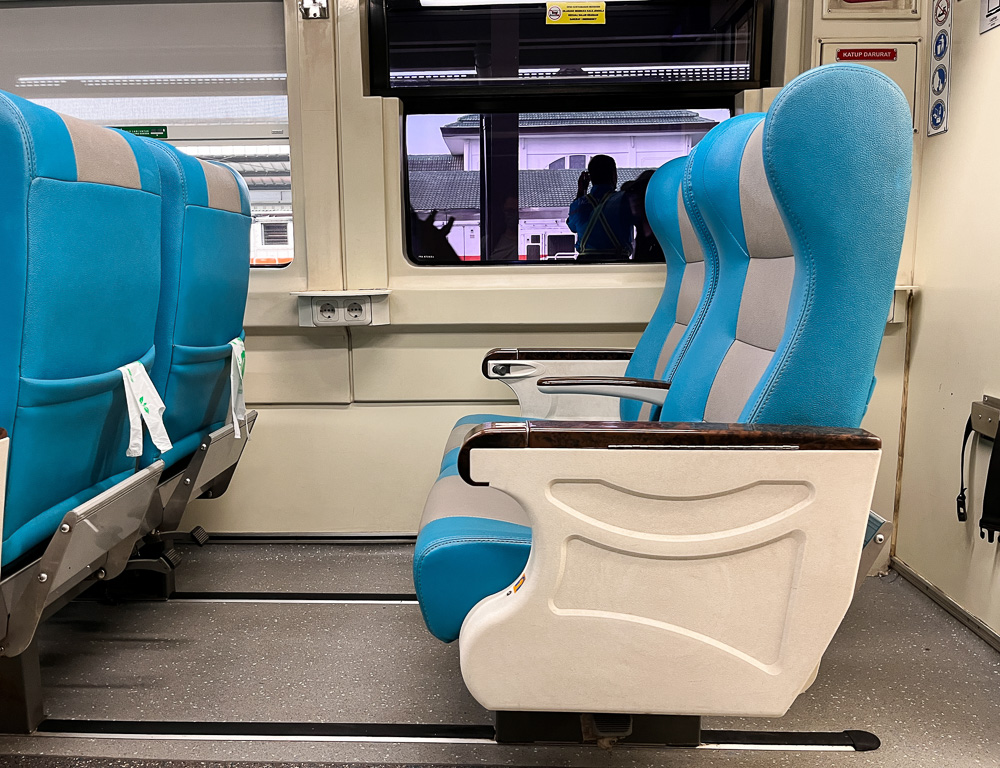
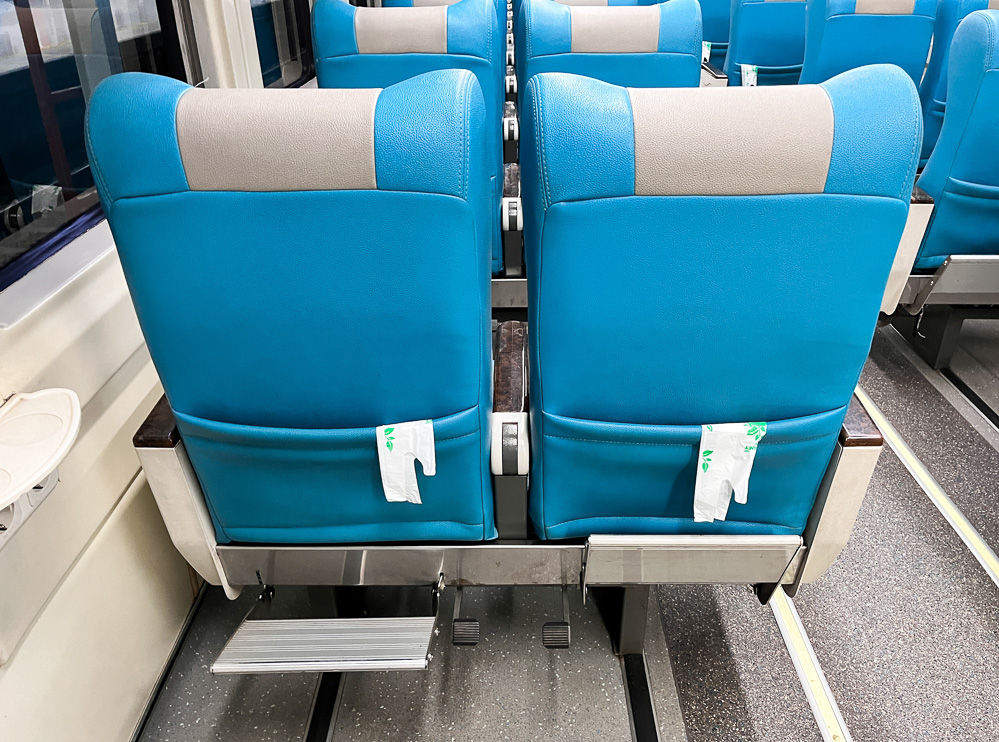
I’m also happy to report that the recline is absolutely phenomenal for a train seat. But I also discovered that too much recline isn’t a good thing with these seats – I had originally reserved the end single seat for myself, but the recline mechanism for my seat was faulty and it reclined just past the limit. Without a leg rest, my legs were left to support my leaned-back upper body by itself and that soon became quite tiring. Things got better after I switched seats, and I was set for a comfortable ride back to Jakarta.
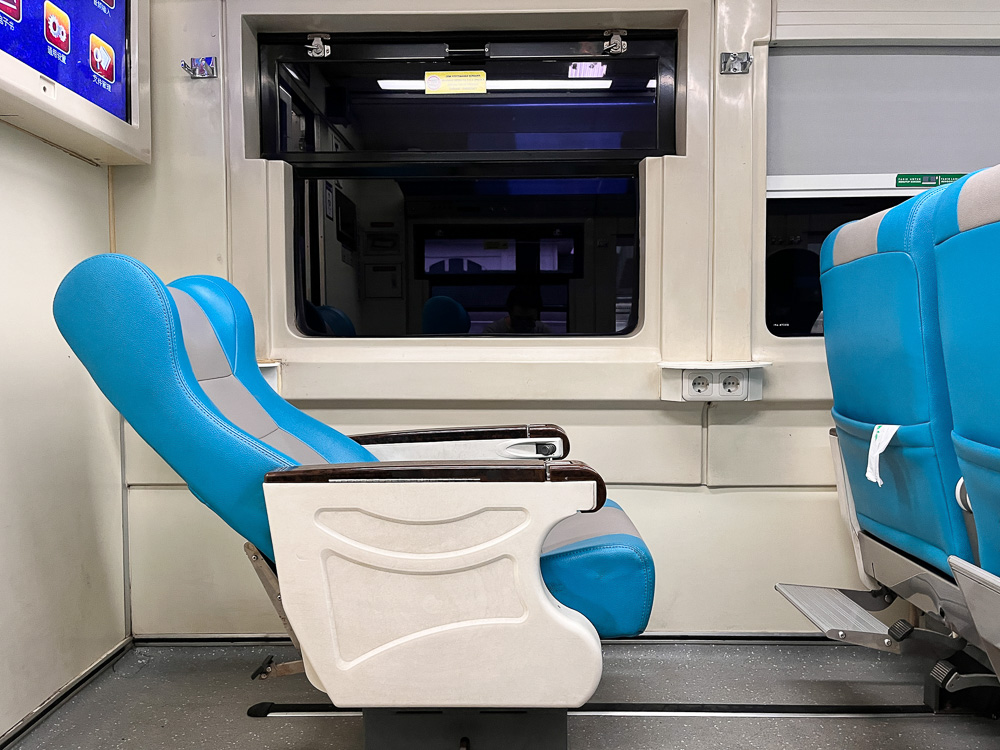
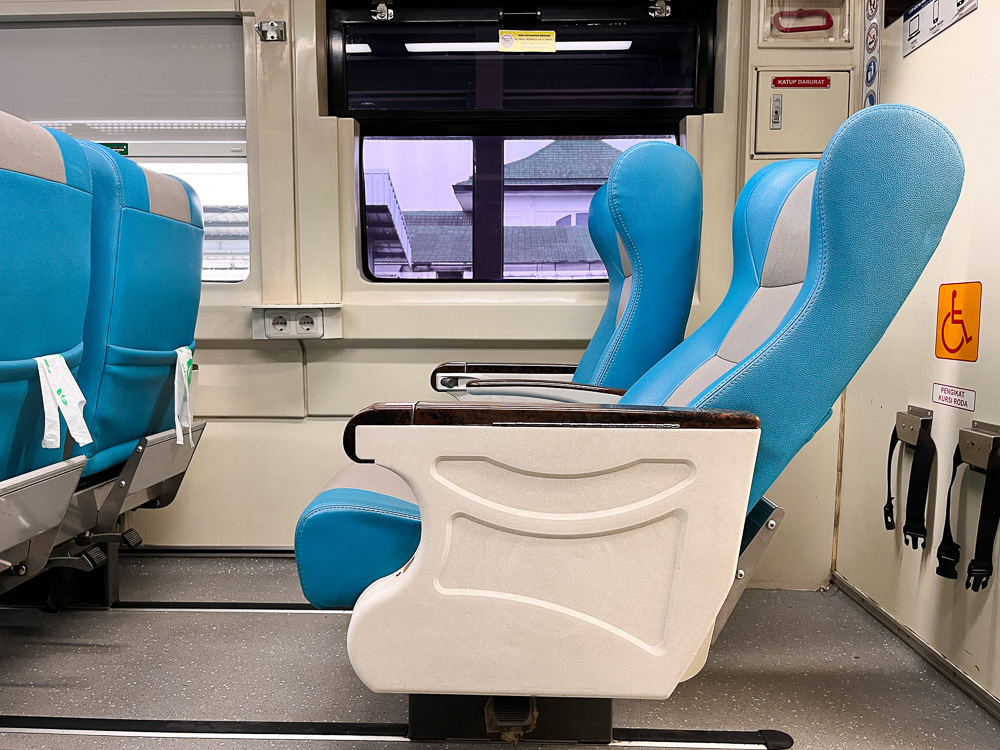
Note: The phenomenal recline also means that any maximum recline by the passenger in front of you can and will interfere with your movement out and into the seat. So that’s one less point for the Executive seats.
I had a very good impression of the cleanliness onboard, as all of the carriages I walked through were spotless. Passengers are also encouraged to maintain this state of cleanliness, and a small plastic bag is made available at each seat for use as a garbage bag. This is collected by onboard staff just before arrival at Gambir.
Argo Parahyangan Panoramic Coach and Economy Class
The Panoramic coach is essentially a regular Executive Class with glass windows inserted in the roof to offer a wider field of view. The seats are identical to Executive Class seats albeit with a different colour. The extra amount you pay goes to giving you frills like a pre-departure lounge at Jakarta Gambir, and an onboard meal service. Much like the regular Executive Class, the seats can be rotated to face the direction of travel, meaning all seats are forward facing by default. I recommend RailTravelStation’s review of the Panoramic Coach for a look at what you get onboard.
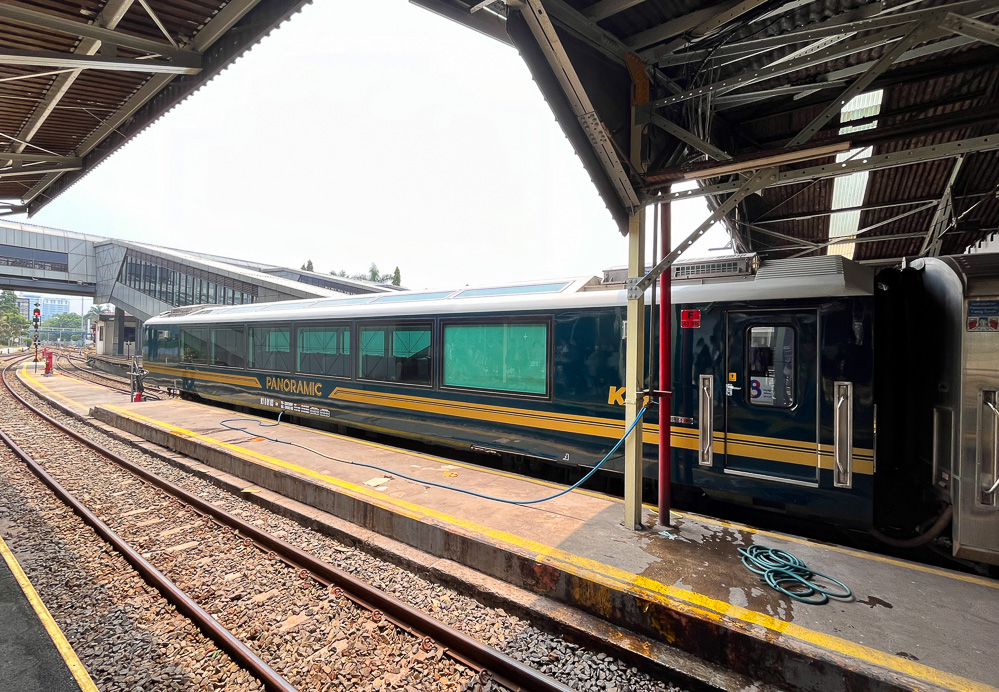
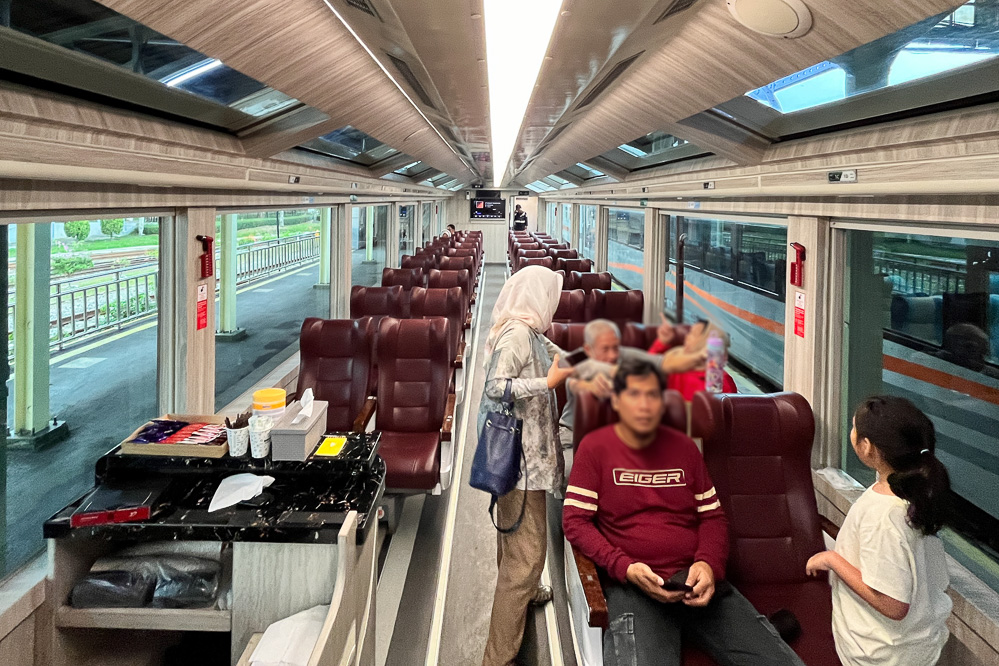
Economy Class, on the other hand, is the cheapest cabin option onboard the train. These seats have very tight legroom and I do not recommend them if you want a more comfortable trip. The Economy Class seats also cannot swivel, and the cabin is split between one half of seats facing backwards with the other half facing forward. I guess you could say this is quite close to a regular European rail standard class.

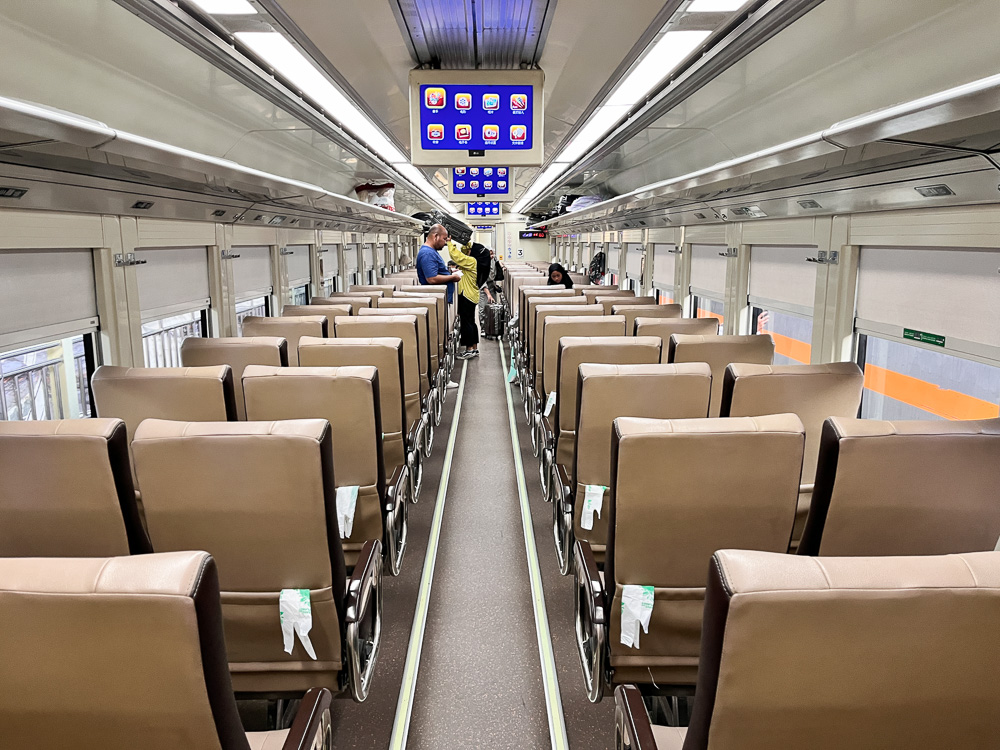
Onboard Amenities – Lavatories
Each carriage features two western style lavatories. The space is quite compact and akin to an airplane lavatory, but PT KAI manages to make it work.

I quite liked that they had toilet paper and hand soap in a sturdy dispenser. Where the experience falls flat is that these lavatories aren’t that accessible to anyone with mobility issues, and I did not see any accessible toilets on this Argo Parahyangan consist either. I might be wrong, and I would be happy to be corrected if that were the case.
Onboard Food & Drinks
The Argo Parahyangan is equipped with a dining car and a trolley service. The dining car looked like it had been recently refurbished, and is a bright and pleasant space to have a meal in.
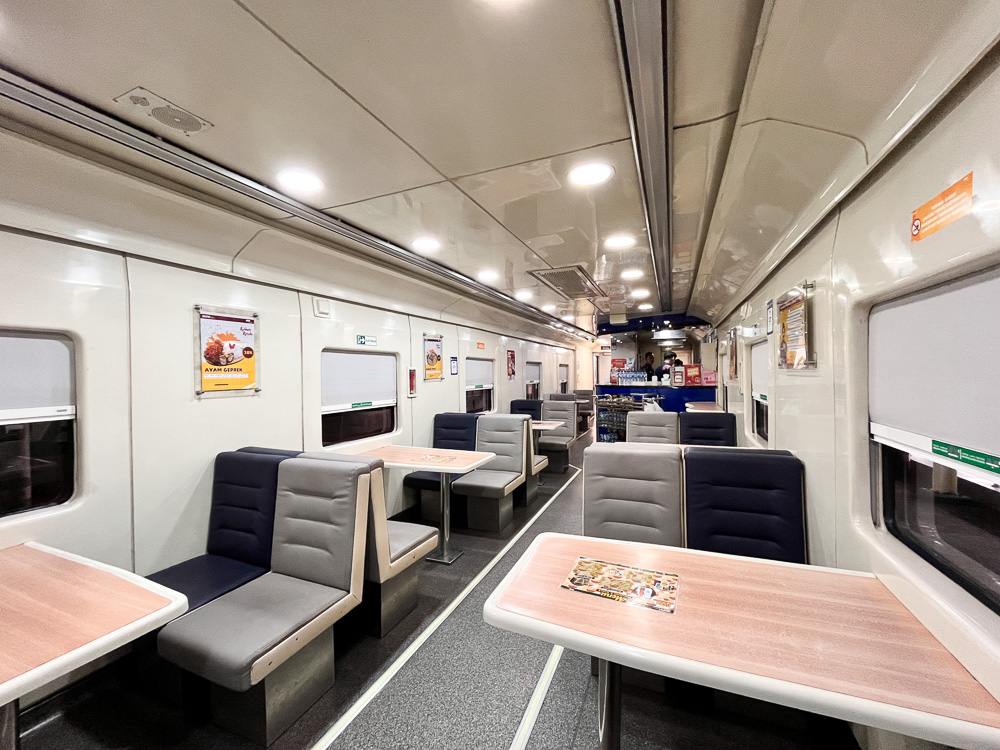
The trolley service did its round just once throughout the journey and sold coffee and packed meals – the exact same things sold in the dining car. I bought a coffee for Rp 15,000, and honestly it wasn’t bad.
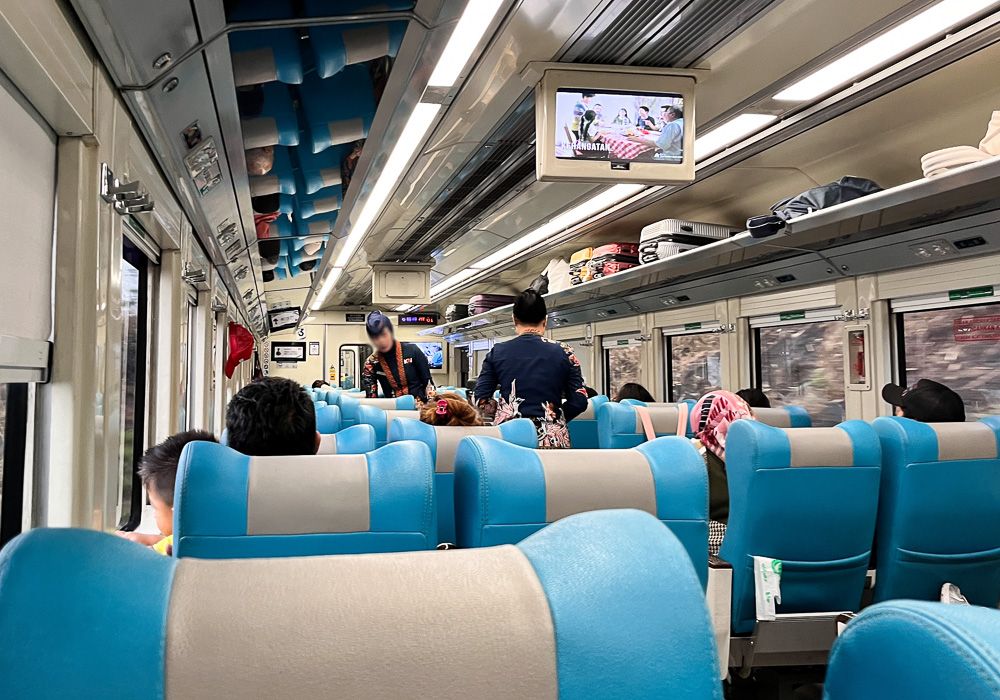
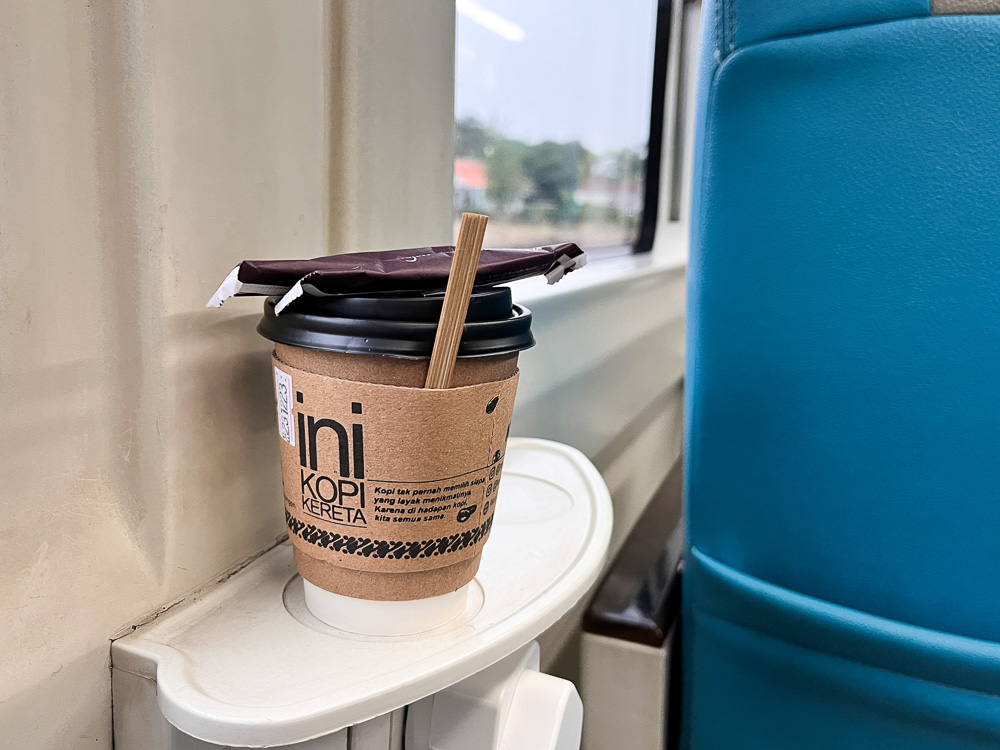
I quite liked that PT KAI runs a trolley service as it’s a sure fire way to increase sales, without forcing passengers to walk all the way to the dining car for a small cup of coffee. The fact that the Argo Parahyangan has a proper dining car is also a big plus in my books. In contrast, KTMB’s ETS trains in Malaysia feature only a small bistro counter and very limited seating by the counter.
The view outside
The Argo Parahyangan’s greatest asset is the views along the tracks between Jakarta and Bandung. As the line leaves Bandung, it begins a winding climb down from the city’s elevation of 768 metres above sea level. The tracks snake through the region’s mountainous landscape as it passes one hillside village after another. Even more spectacular are the ravine crossings that also go over stepped paddy terraces below.
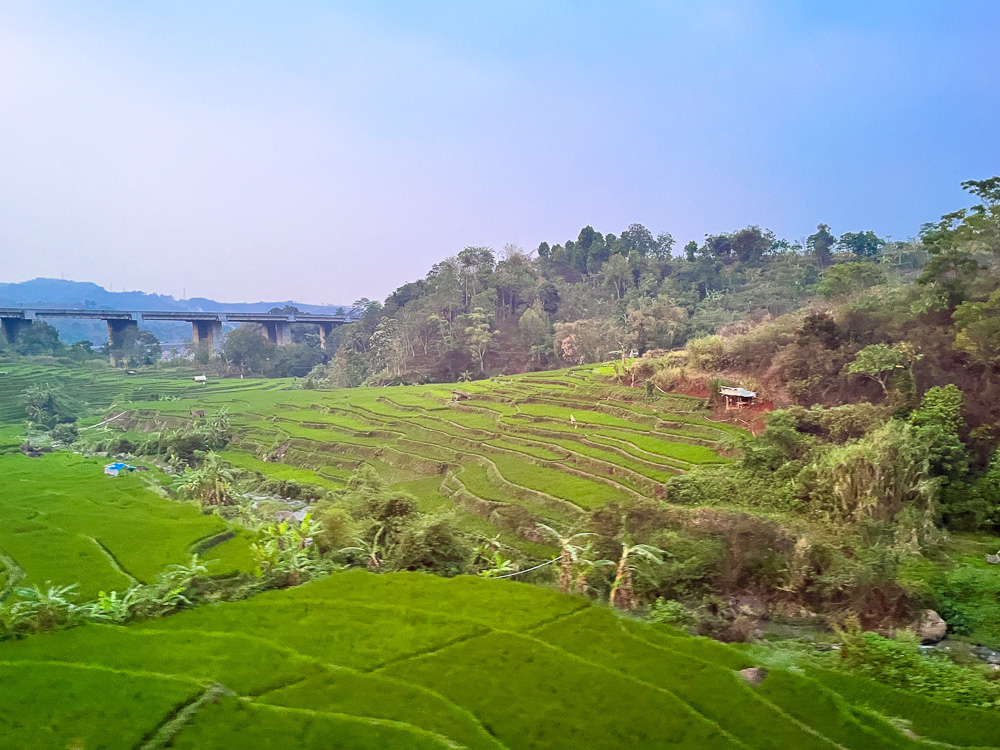
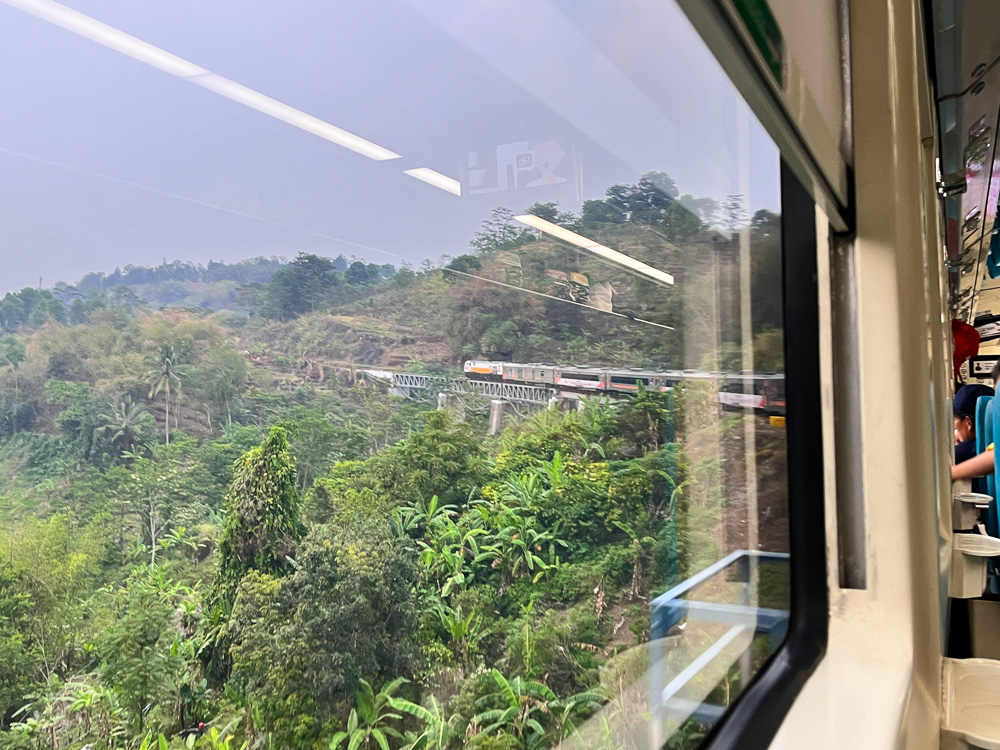
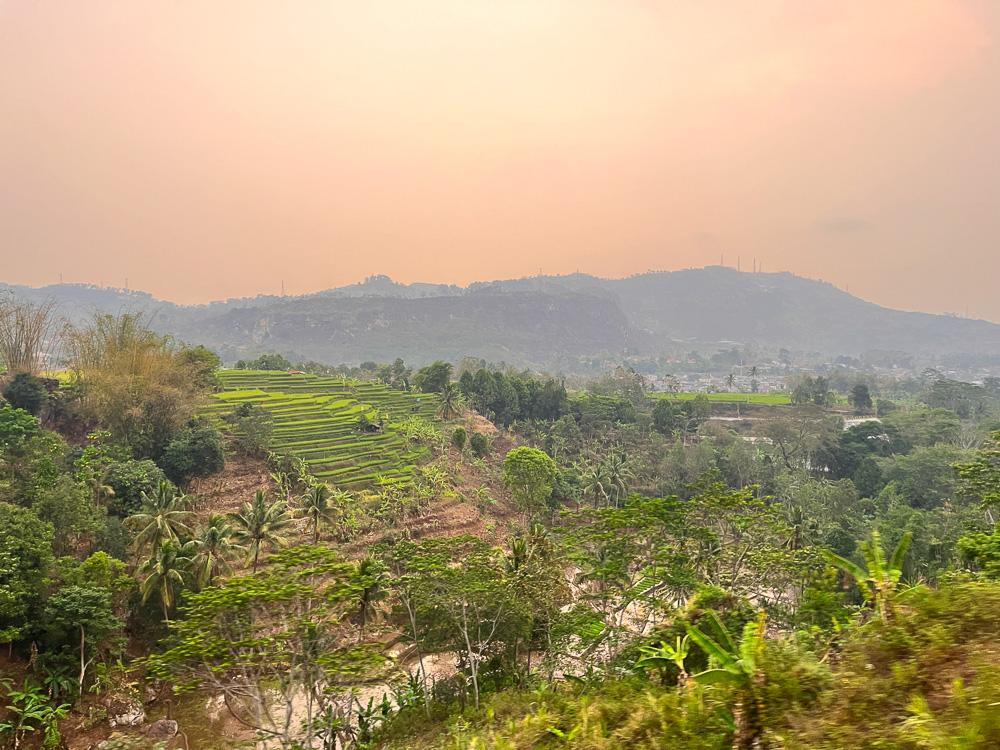
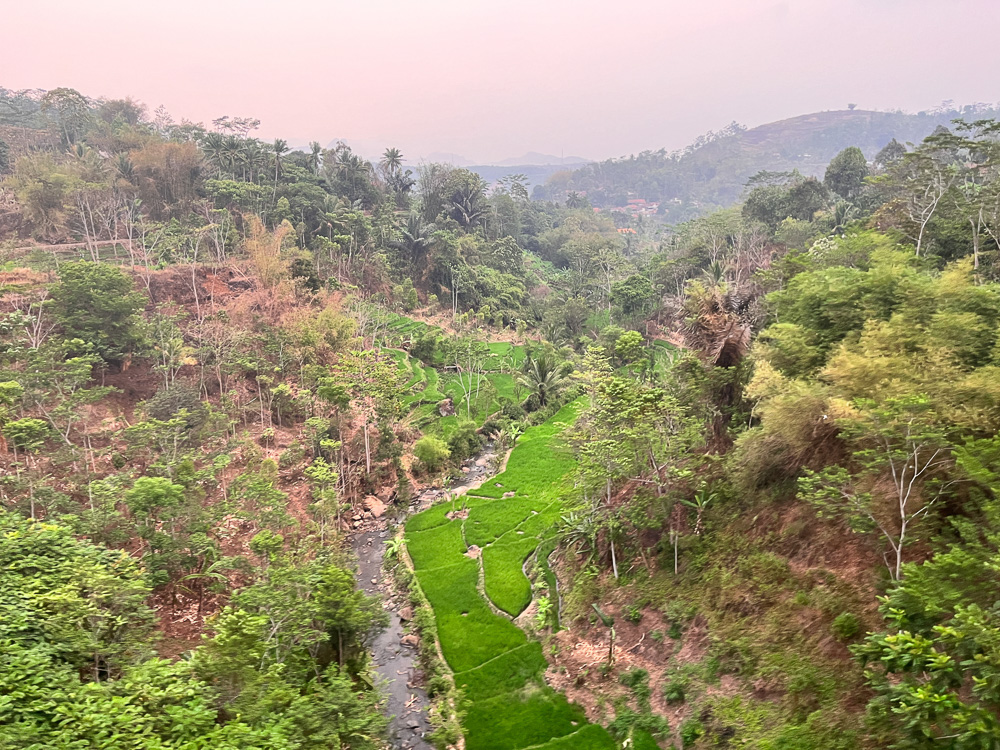
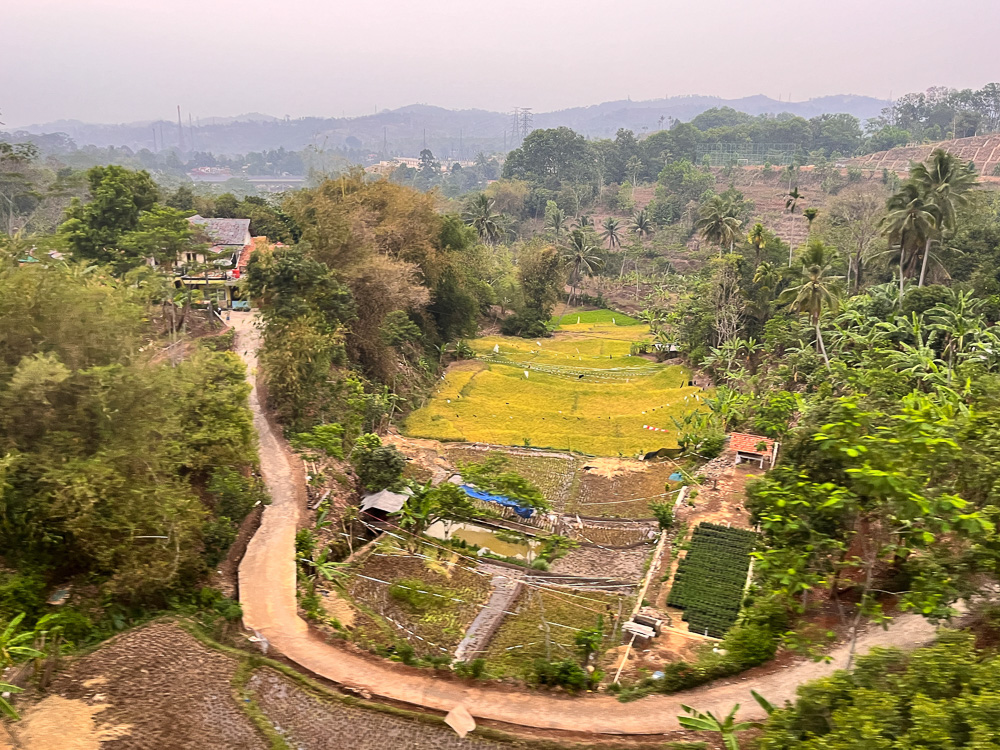
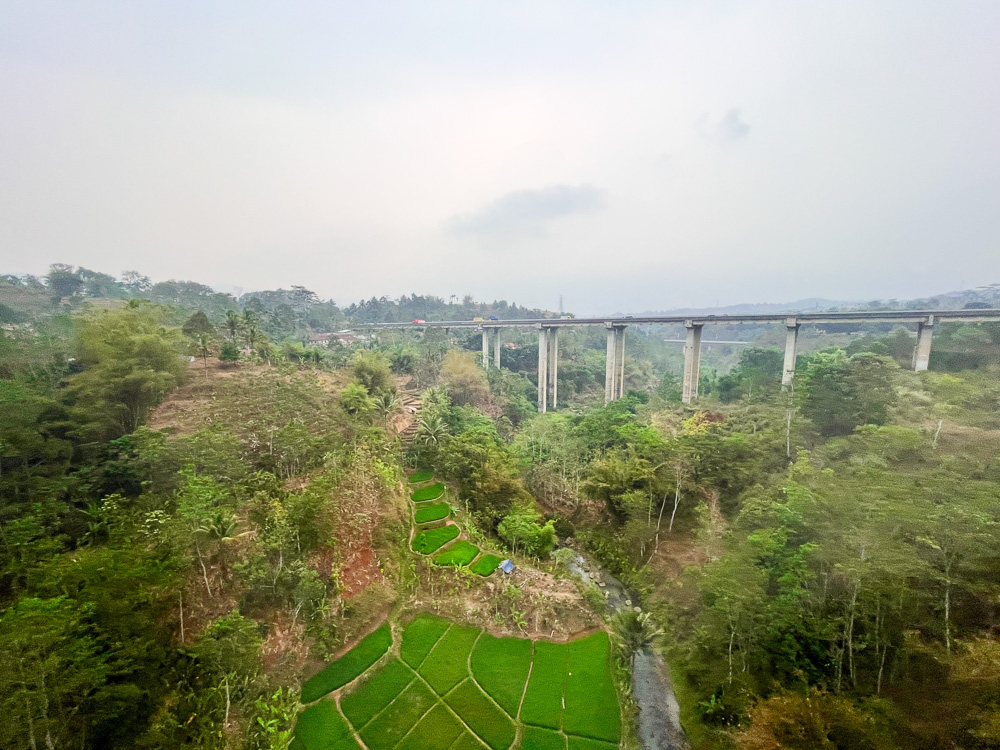
A particular sight is the Cisomang Railway Bridge (Jembatan Cisomang), the tallest railway bridge in Indonesia. The bridge in use today was built in 2004 and stands 100 metres above the eponymous Cisomang River. The bridge is notable enough that our train staff made a special announcement just before we were to cross over, which was a very nice and informative touch.
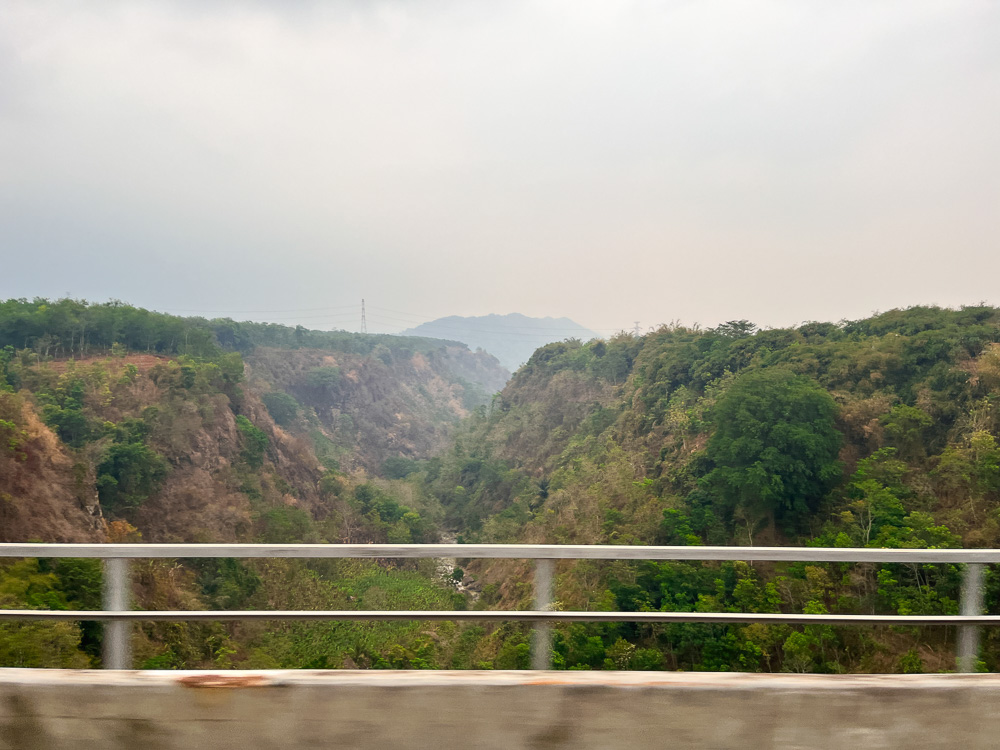
Like most legacy railway networks, the mainline between Jakarta and Bandung has an unmatched proximity to the outlying communities. Much of the train stations on the legacy mainline, and indeed the tracks themselves, are sited and run through the built area. This secures the legacy mainline as a crucial and convenient connection for these communities – Given the geography of the Bandung area, the train is the most straightforward link to both Jakarta and Bandung. This simply cannot be matched by the HSR, as its speed-centric alignment prioritises the fastest run between the two cities and bypasses these outlying communities altogether.
For visitors, this is a glimpse at life in outlying areas that are not usually seen on a typical touristy visit to major cities. You also get to catch a glimpse from above of the WHOOSH’s high speed alignment cutting through the terrain, which is precisely the reason why views from the WHOOSH aren’t as great as the ones from the Argo Parahyangan.
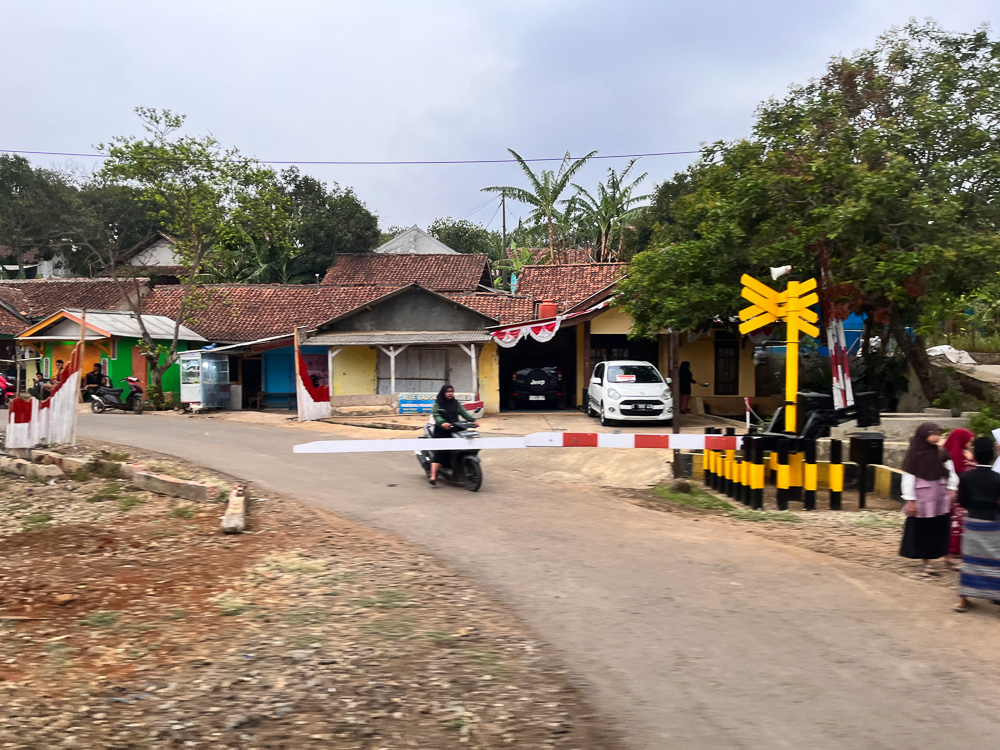
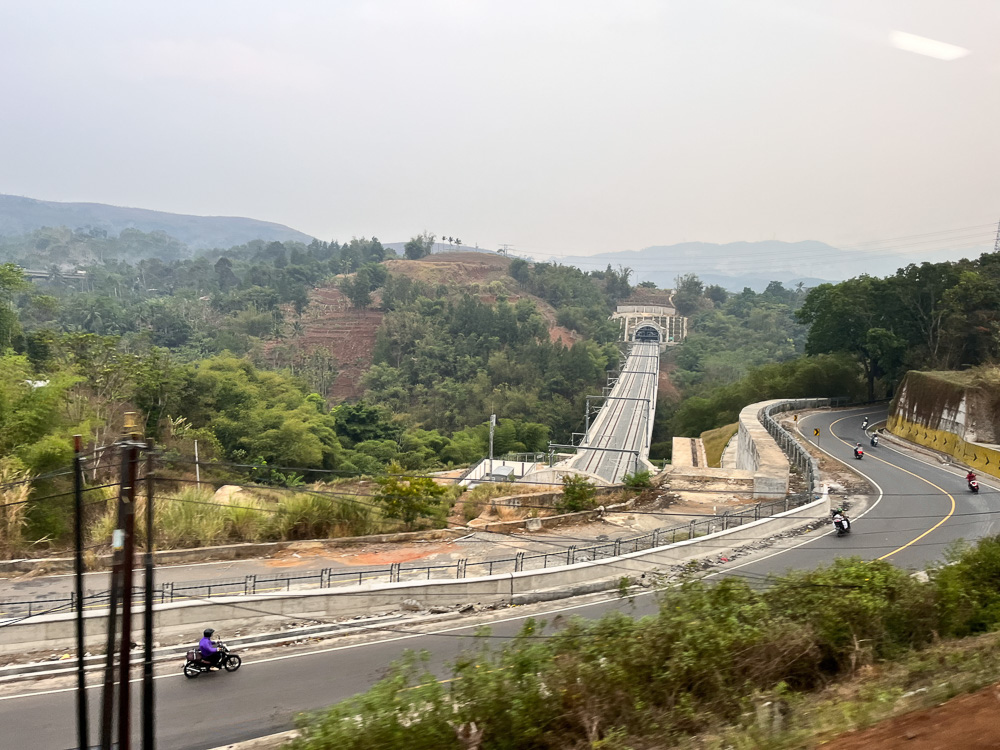
The view outside changed as the train completed its descent from the highlands. Gone were the hillside villages and valleys, as the line now wound its way around paddy fields and coconut trees. The relative flatness of the land here drew the distant mountains into contrast, with the dormant stratovolcano Mount Pangrango looming silently over the Javanese landscape.
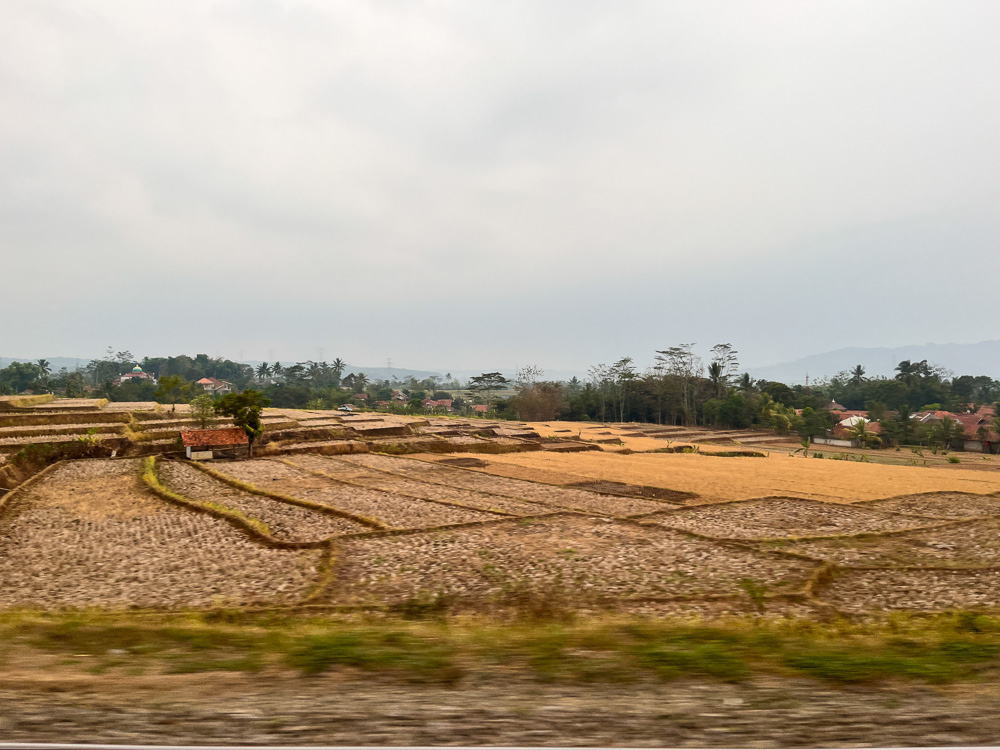
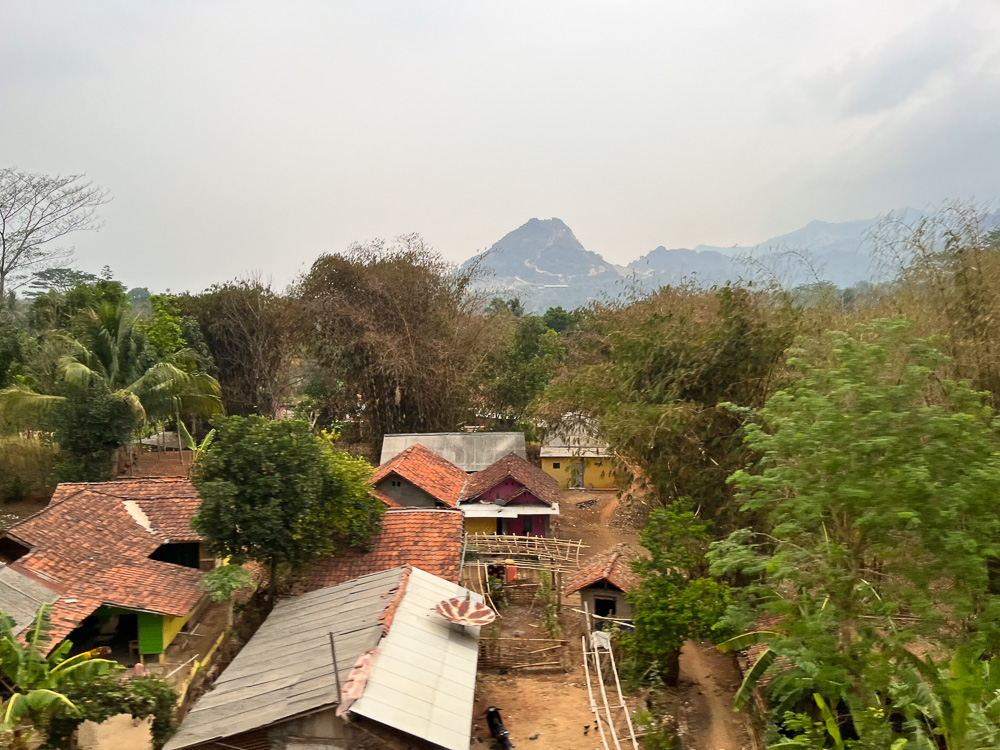
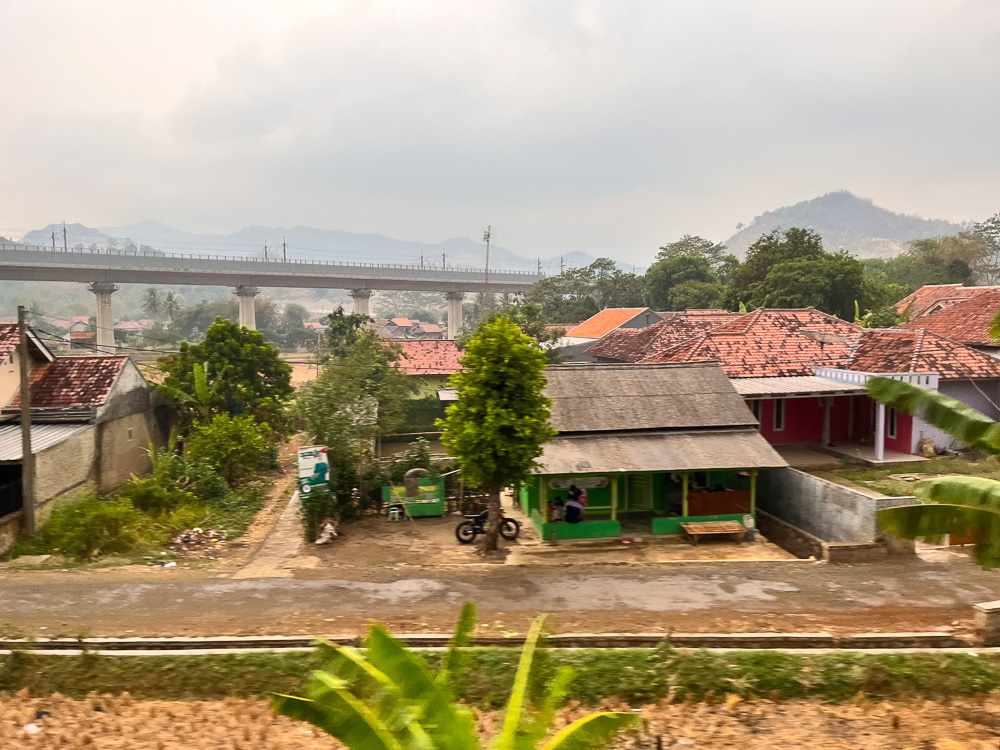
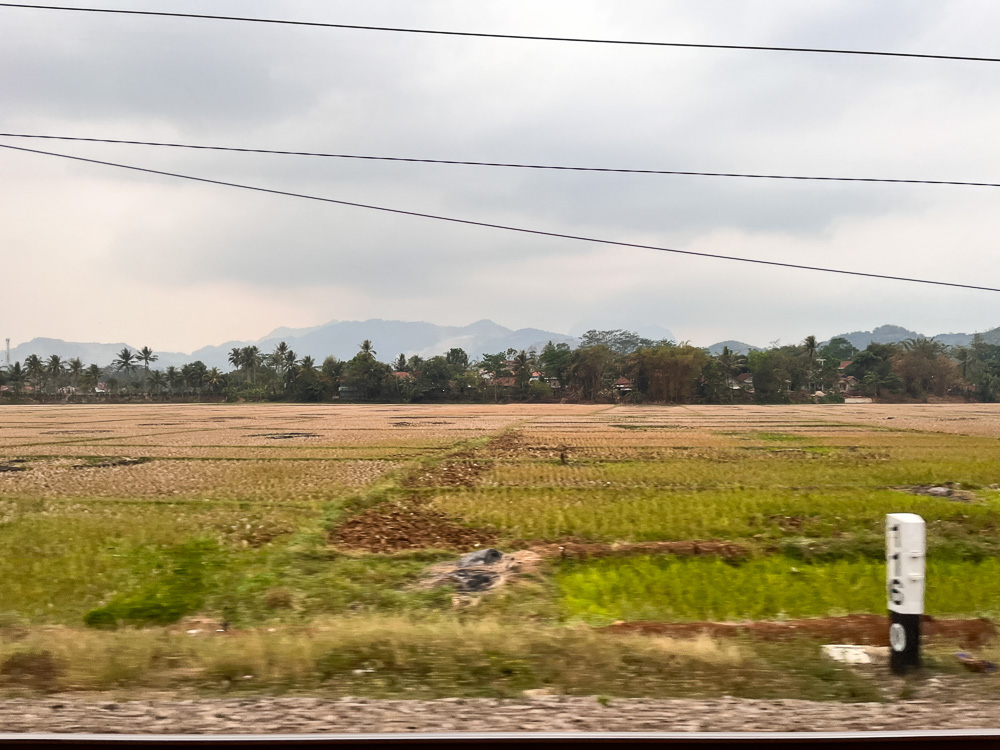
The sun set around 6pm, and the only thing left to do see at that point were the many KRL Jakarta stations as we hit the Greater Jakarta urban area (also known as Jabodetabek in local parlance).
Arrival at Jakarta Gambir station
We pulled into Platform 1 on time at Gambir after 2 hours and 45 minutes of travelling. Collecting my items, I hopped down onto the platform as PT KAI staff worked to get the train ready for its 7:45 pm return trip to Bandung.
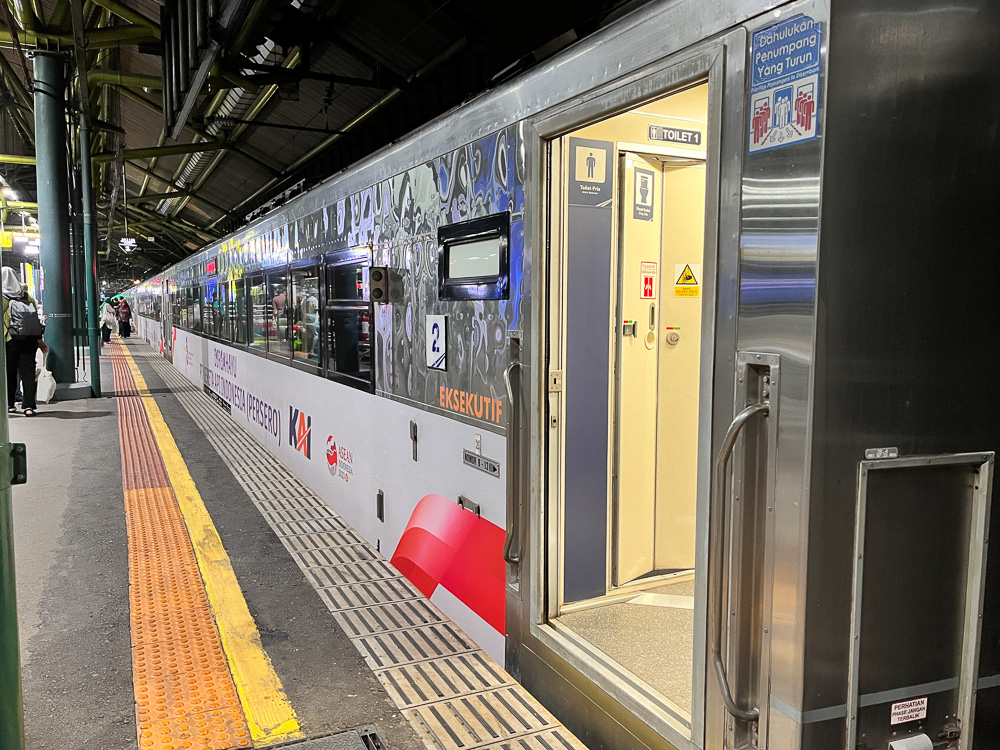

I took the opportunity to walk down the platform to take in the view. It seems our train was long enough for it to occupy the entire length of the platform.
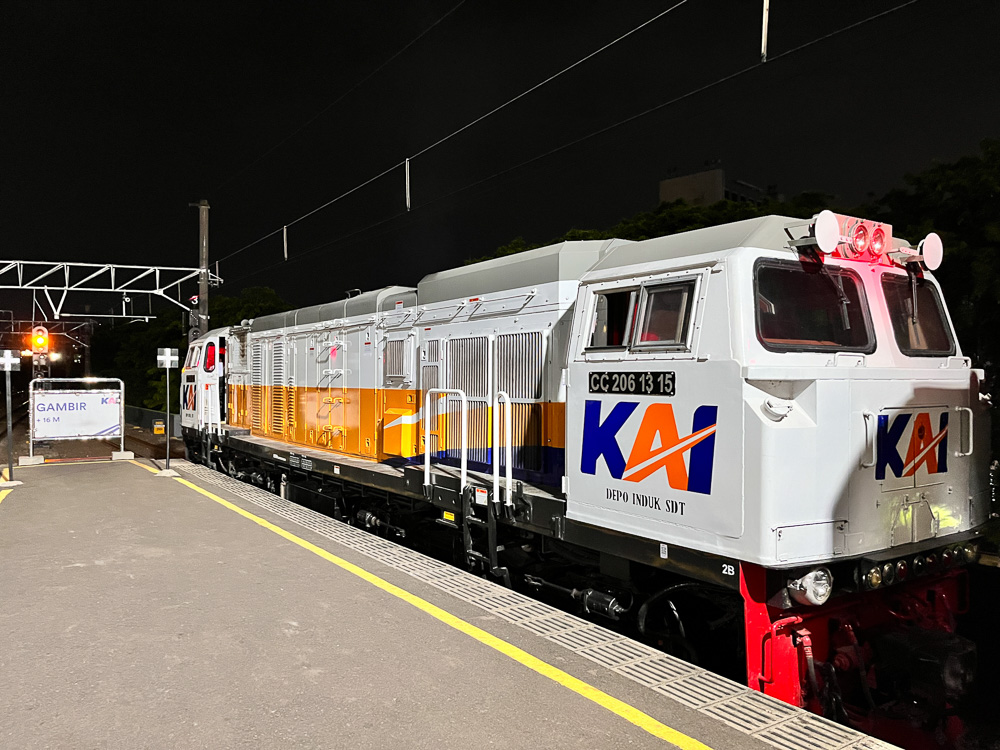

Gambir is one of Jakarta’s two intercity train stations and handles all of its daily movements with two sets of island platforms. The station serves only intercity trains and do not serve any of the KRL commuter trains passing through. To get anywhere else via public transport from Gambir, your best bet is to walk out to the nearest Transjakarta bus halt.

Final Thoughts
The Argo Parahyangan is not the fast and ultramodern train that is the WHOOSH, but it maintains two distinct advantages over the latter: a direct routing, and cheaper tickets.
For starters, the service is a crucial and affordable mode of transport for many Indonesians. While my Rp 215,500 Executive Class ticket wasn’t the cheapest option (the cheaper tickets had sold out by then), it was still cheaper than the WHOOSH‘s non-discounted fare of Rp 300,000. Meanwhile, the Economy Class tickets can go even lower, and a search for tickets one week in advance reveals prices starting from Rp 150,000 onwards for the same service as this one. This means that services like the Argo Parahyangan will have a consistent customer base for the foreseeable future while the WHOOSH attracts passengers who can and are willing to pay for the speeds with a transfer at Padalarang.
The Argo Parahyangan’s slower speeds also allows its passengers to live in the moment with ample time to actually experience the train journey while still going somewhere. The views from the legacy alignment are also unbeatable and is not something you will get with the WHOOSH – It’s true, look at how many pictures I took out of the windows!
I was also quite impressed with PT KAI’s service levels, and I personally think portions of it exceeded KTMB’s intercity offerings. There’s a certain rhythm to PT KAI’s operations on this service that comes with experience from running multiple services every single day for a large population on a less modern track base, while KTMB feels somewhat slower and less dynamic despite the upgrades to the mainline.
This journey on the Argo Parahyangan back to Jakarta may have taken me longer than it would have been on the WHOOSH. But at the end of the day, it was still the Argo Parahyangan that was the most memorable.

Comments
One response to “PT KAI: KA Argo Parahyangan 45 from Bandung to Jakarta Gambir”
[…] spend around 50 minutes travelling via HSR as compared to at least 2 hours and 45 minutes on the legacy Argo Parahyangan direct from Jakarta Gambir to […]